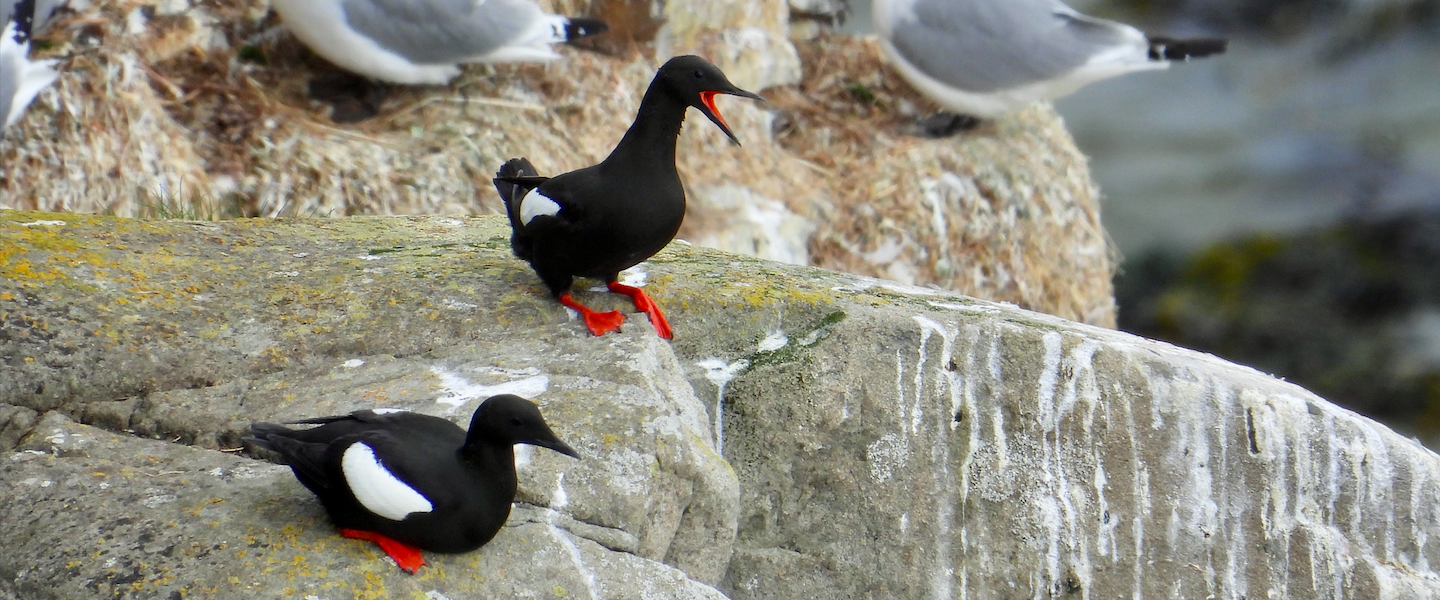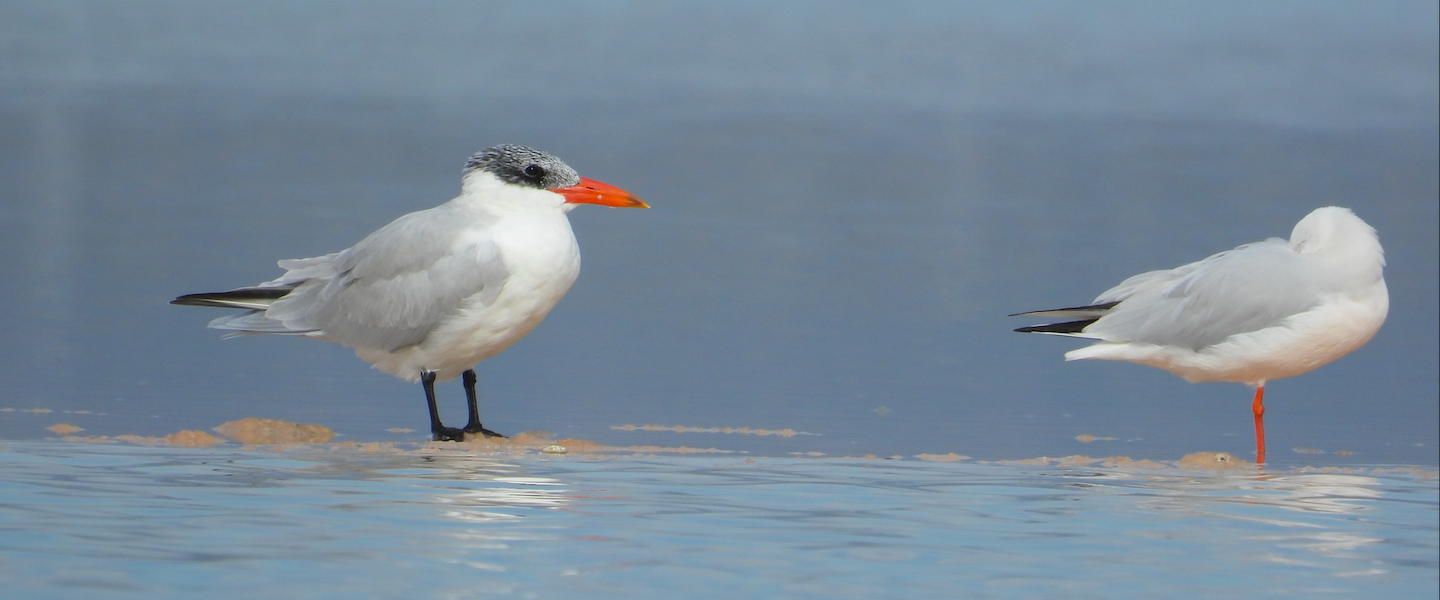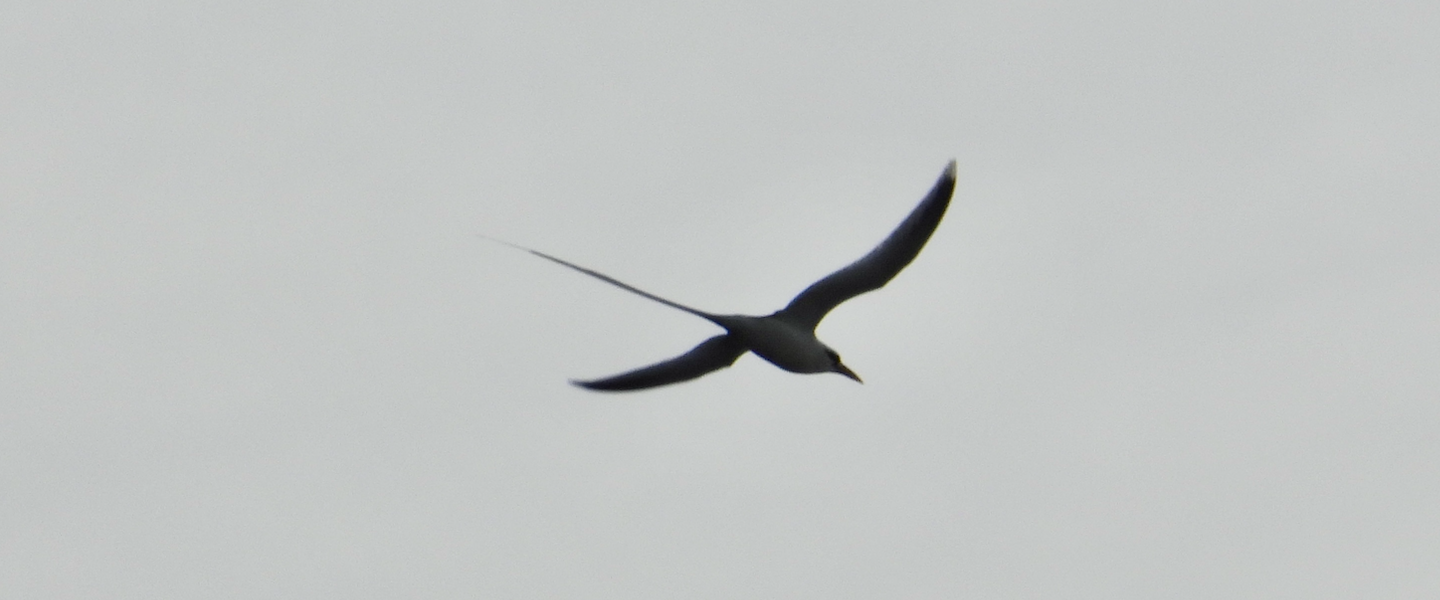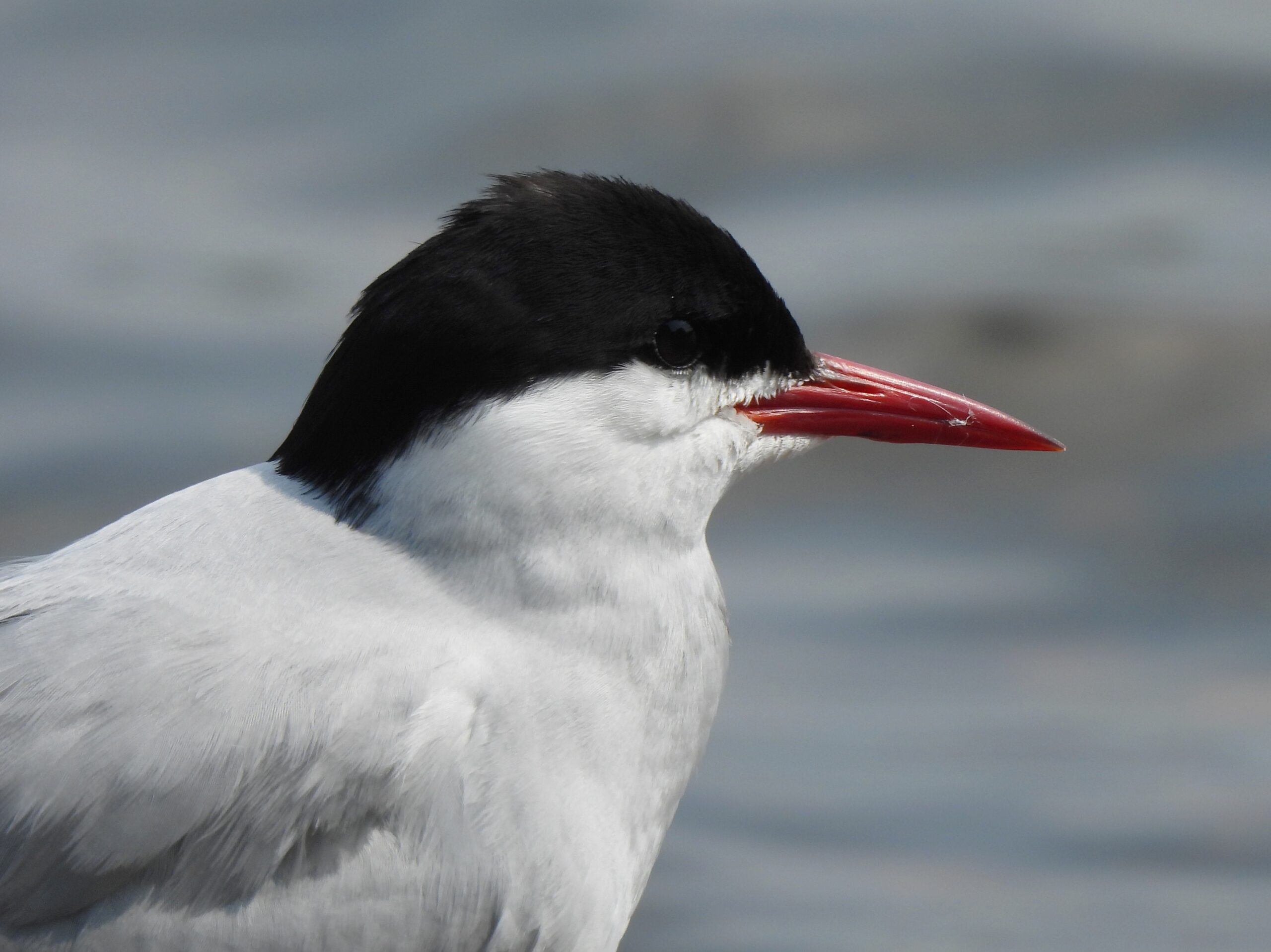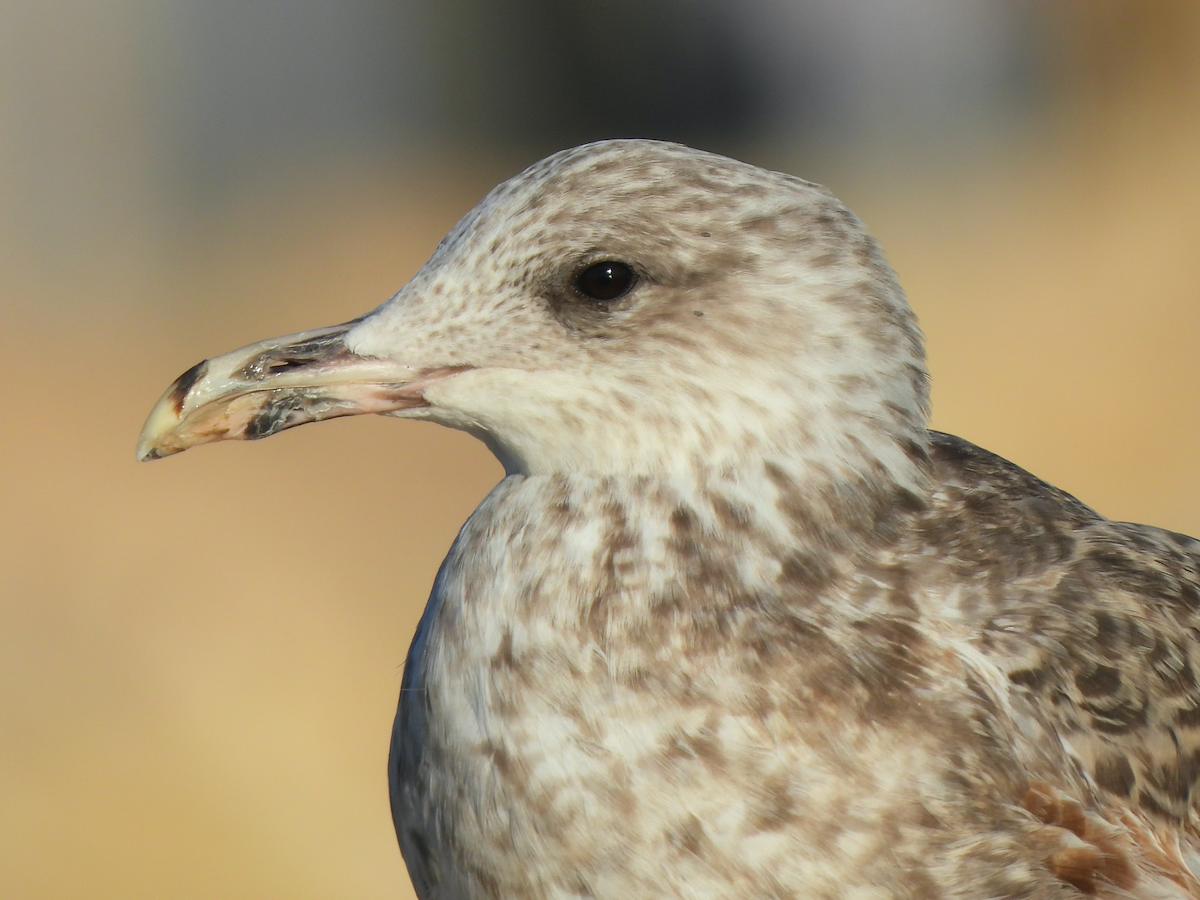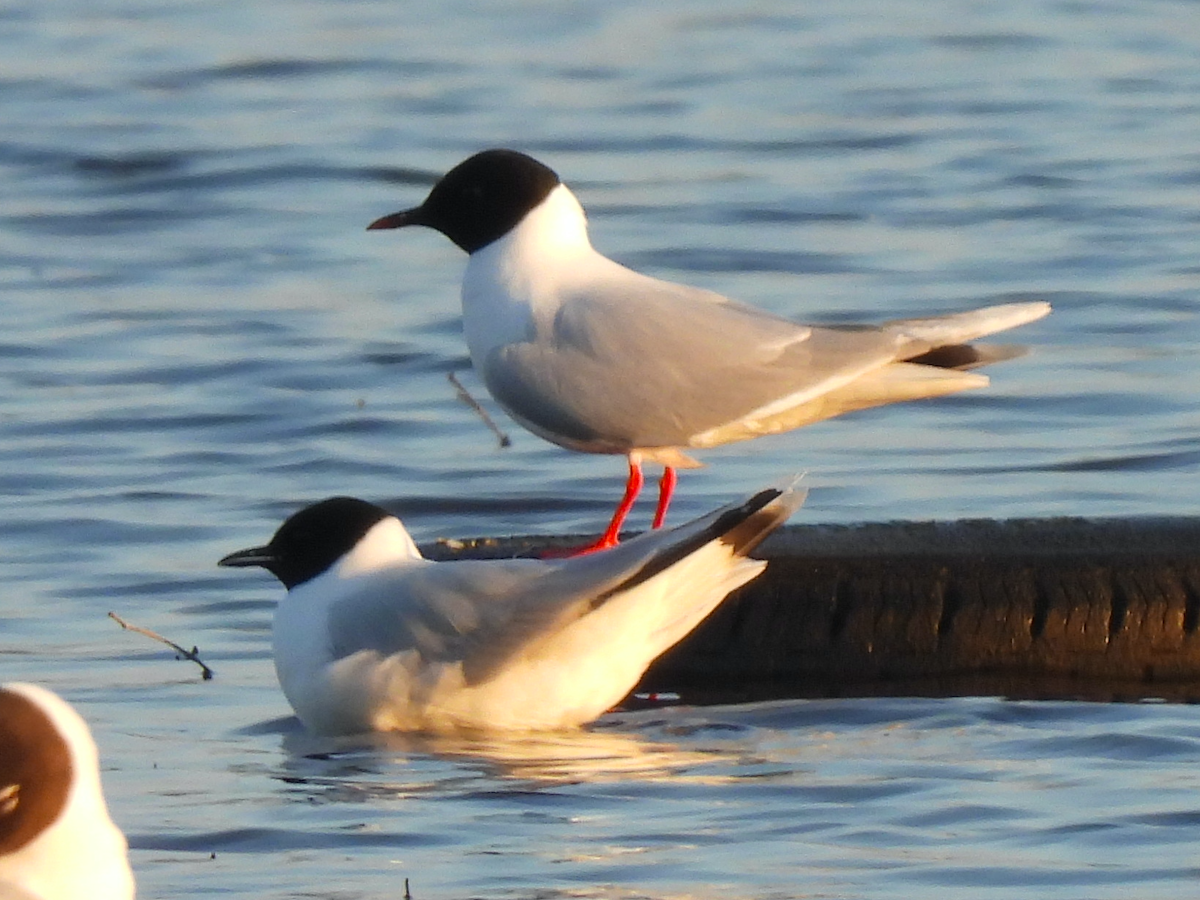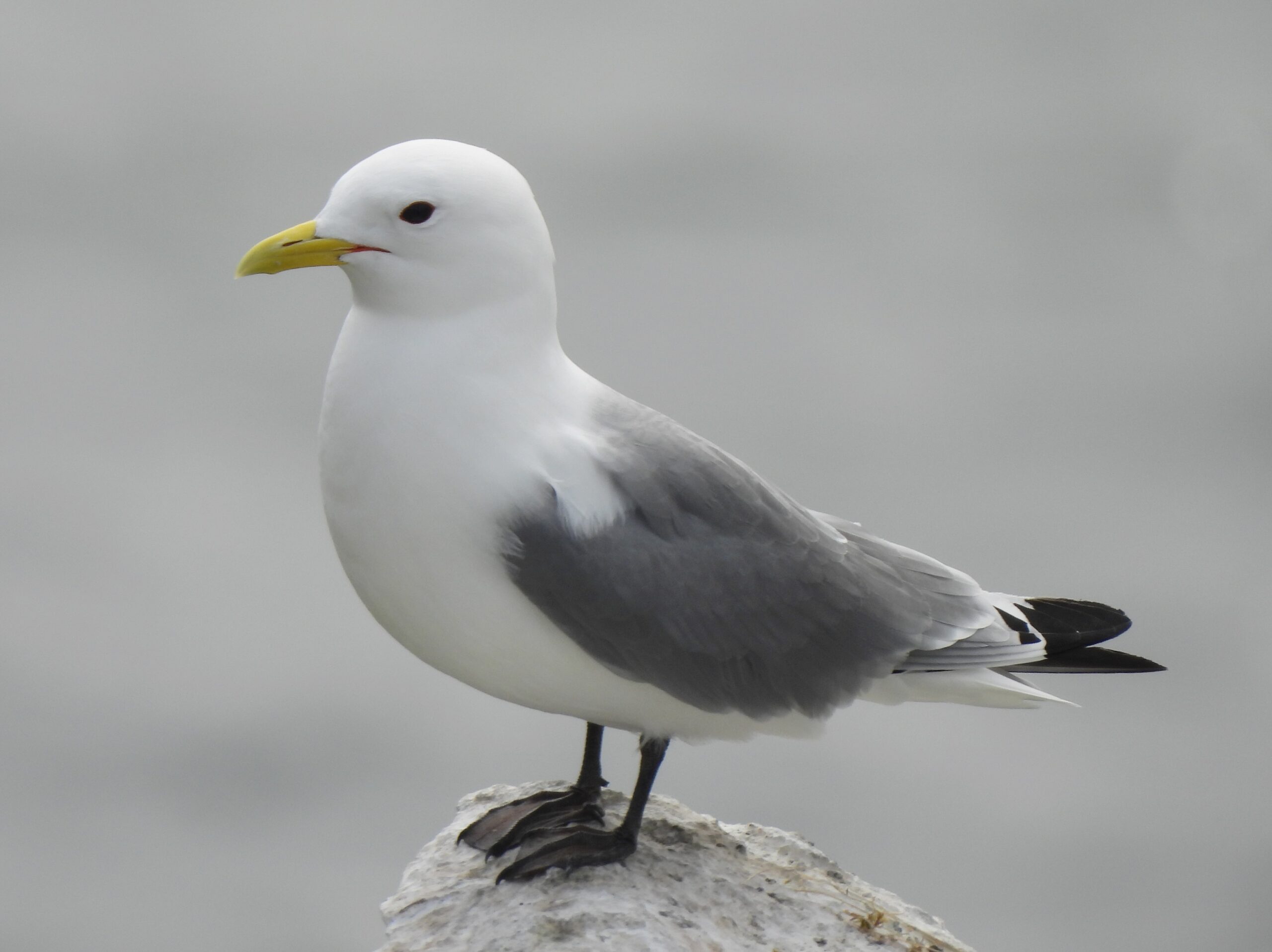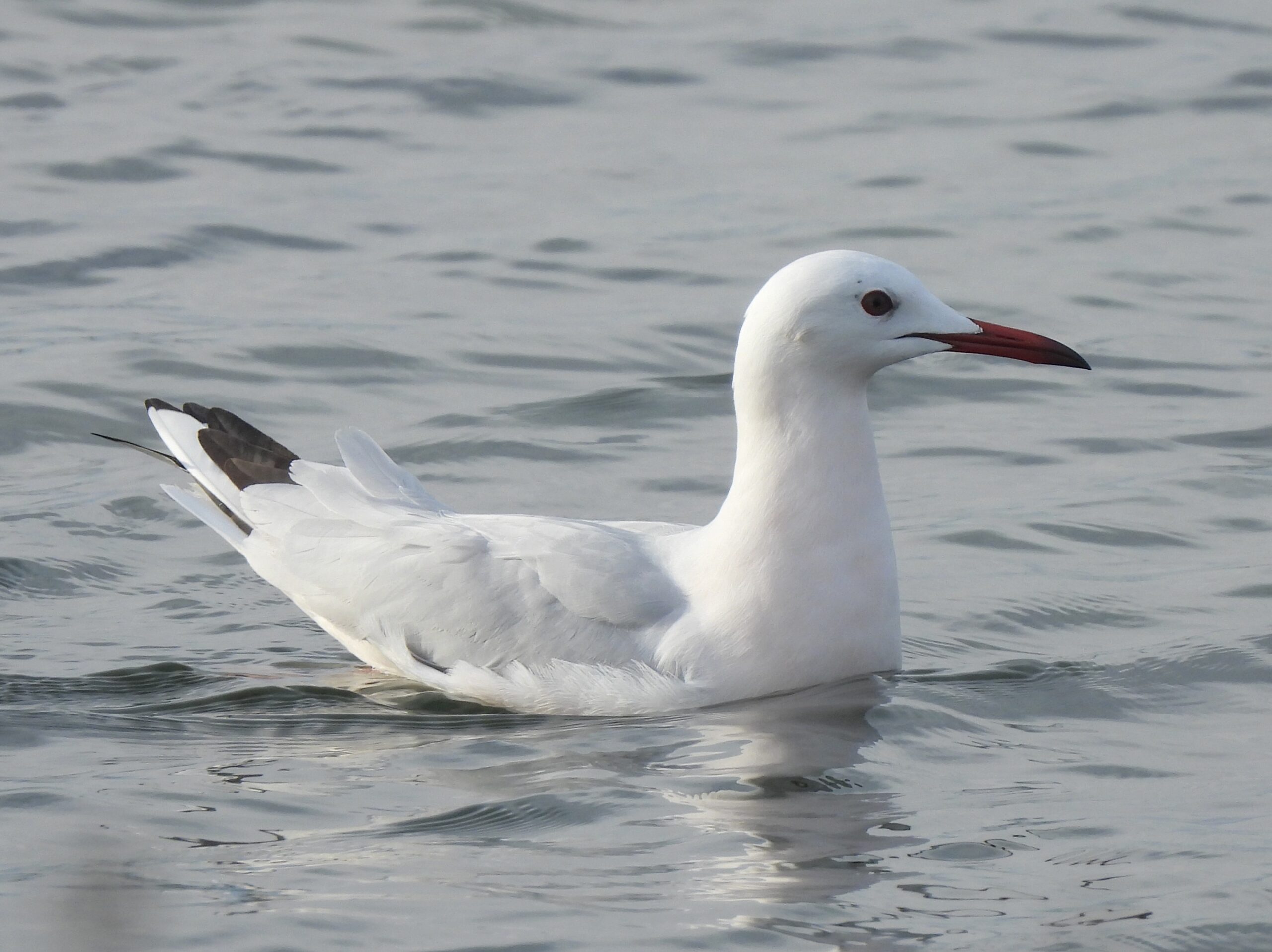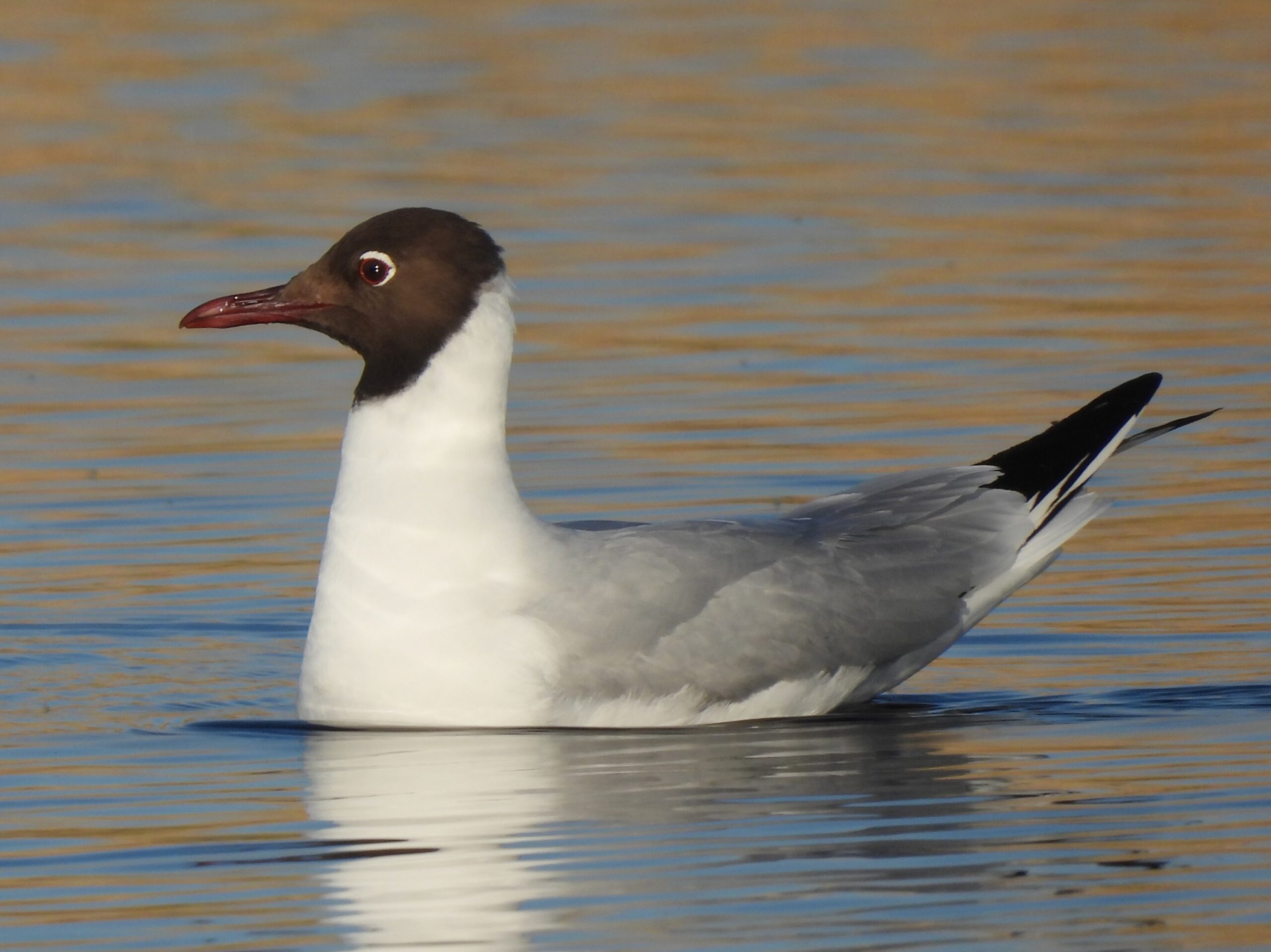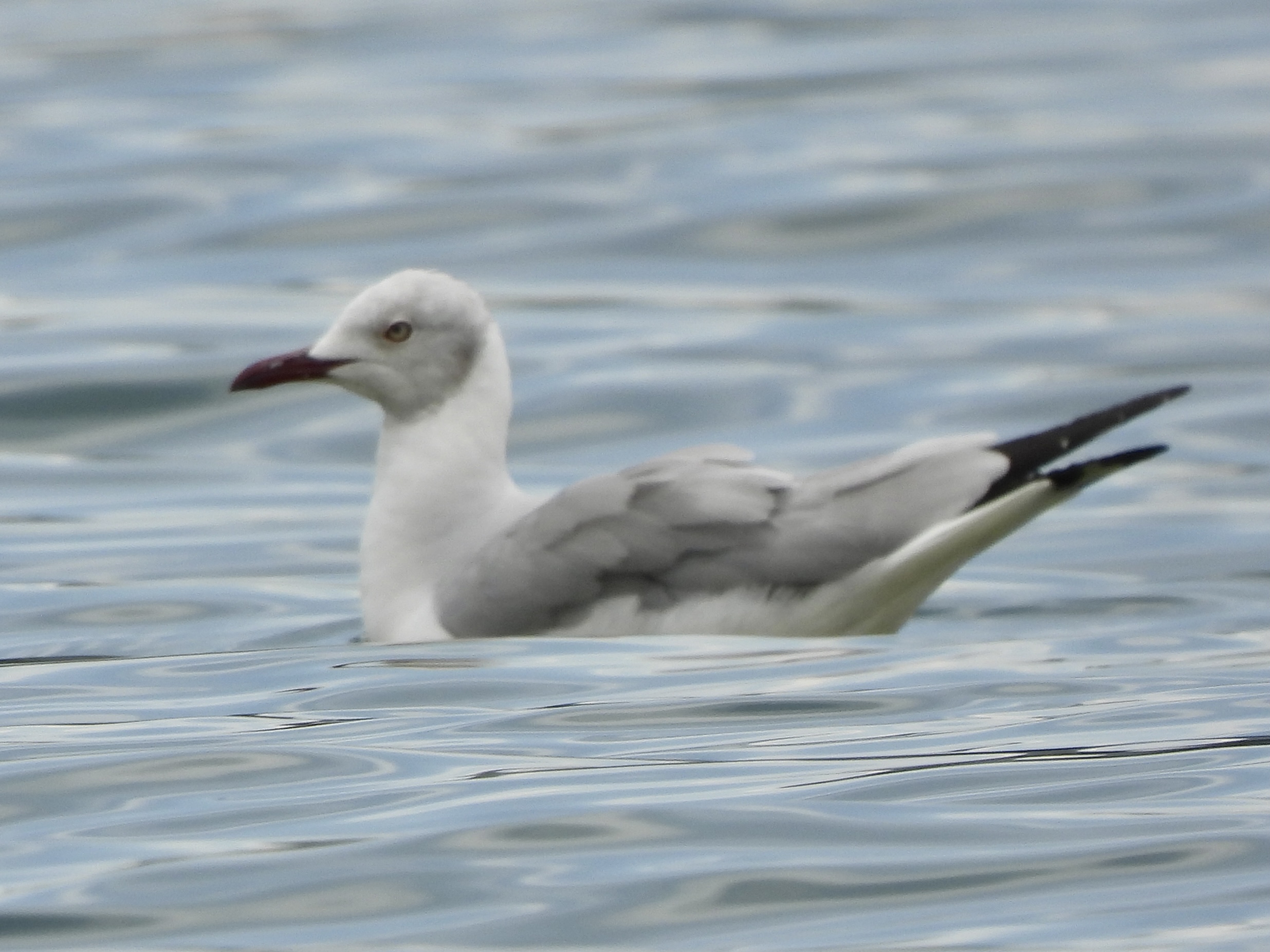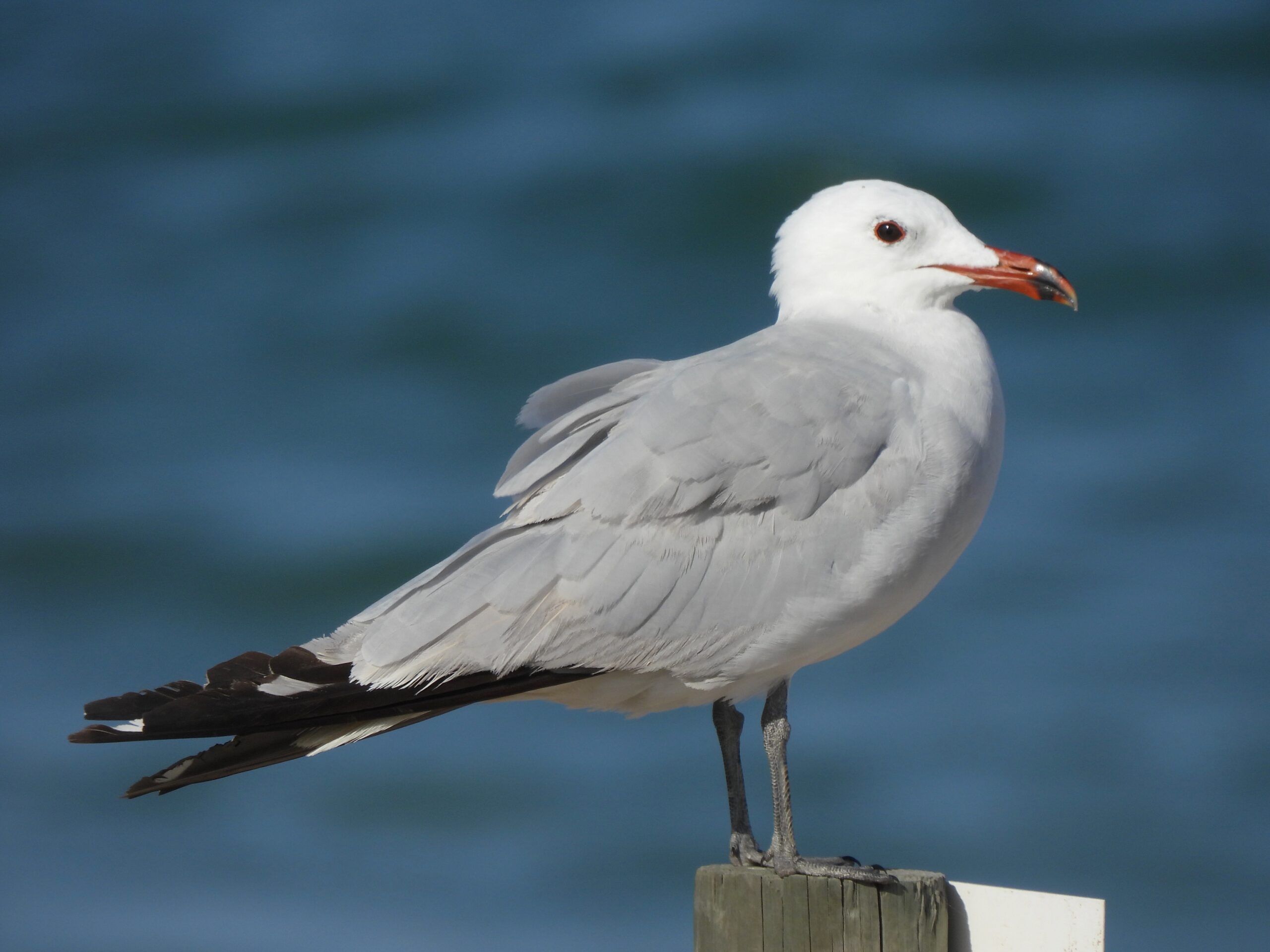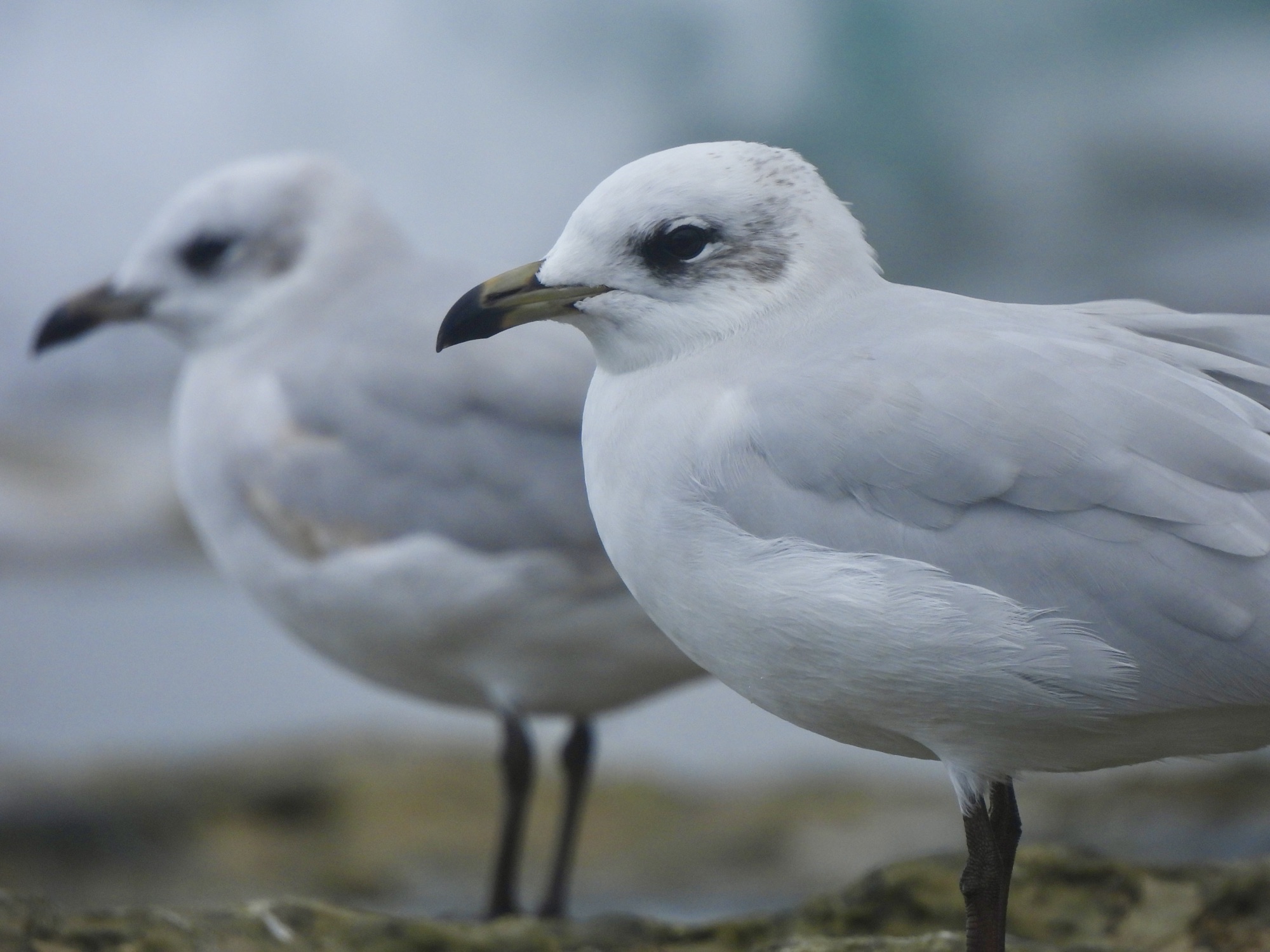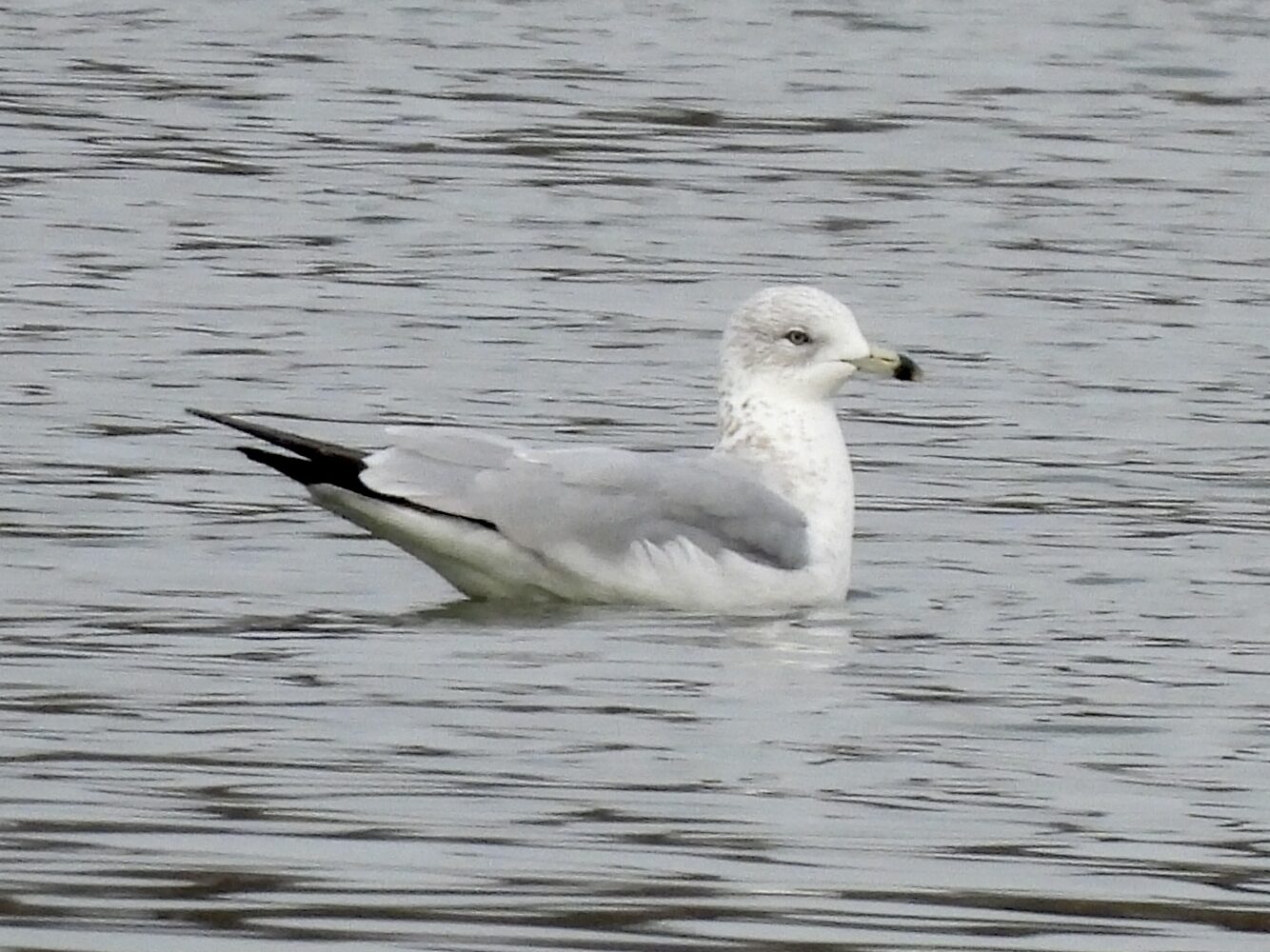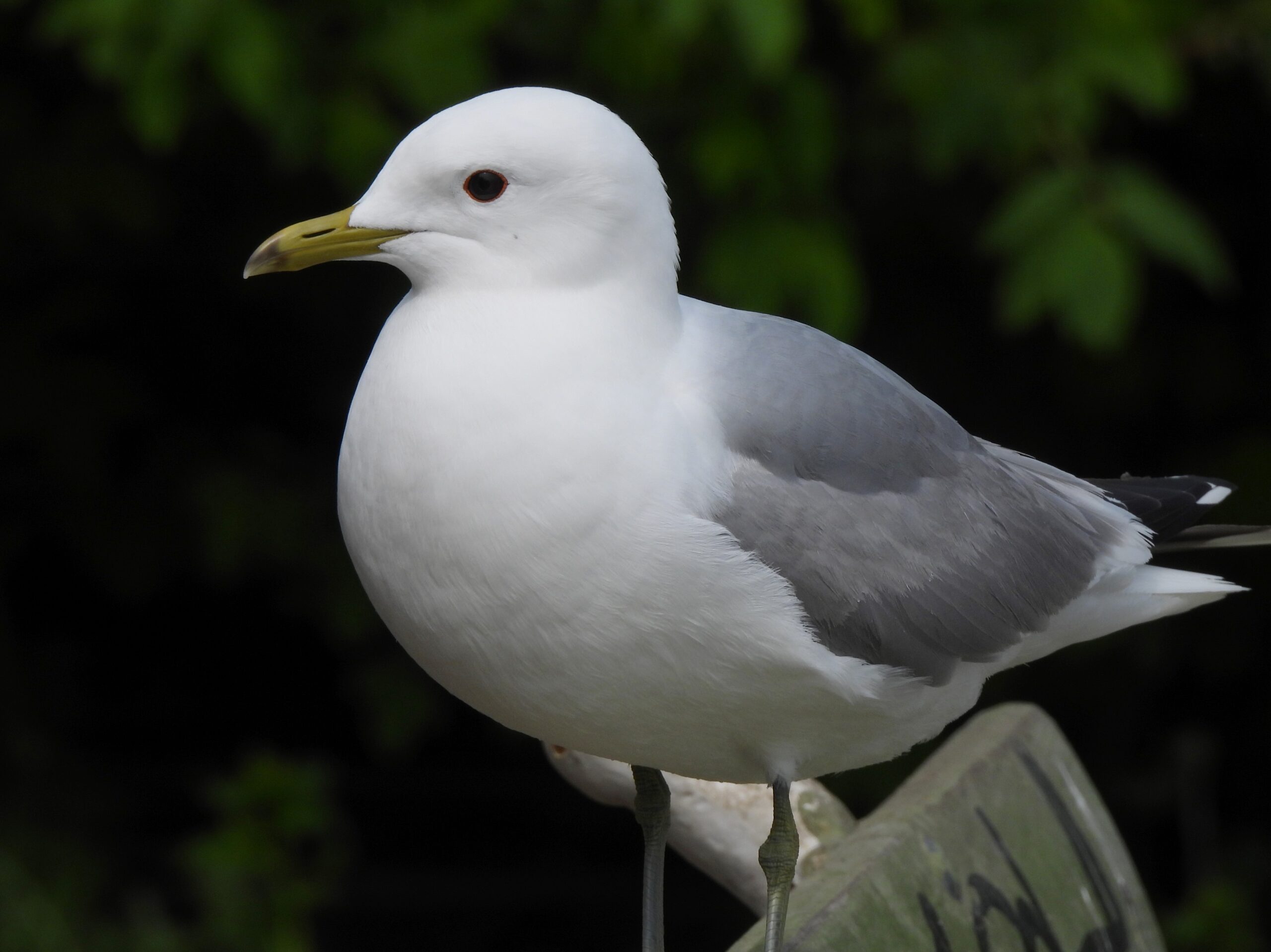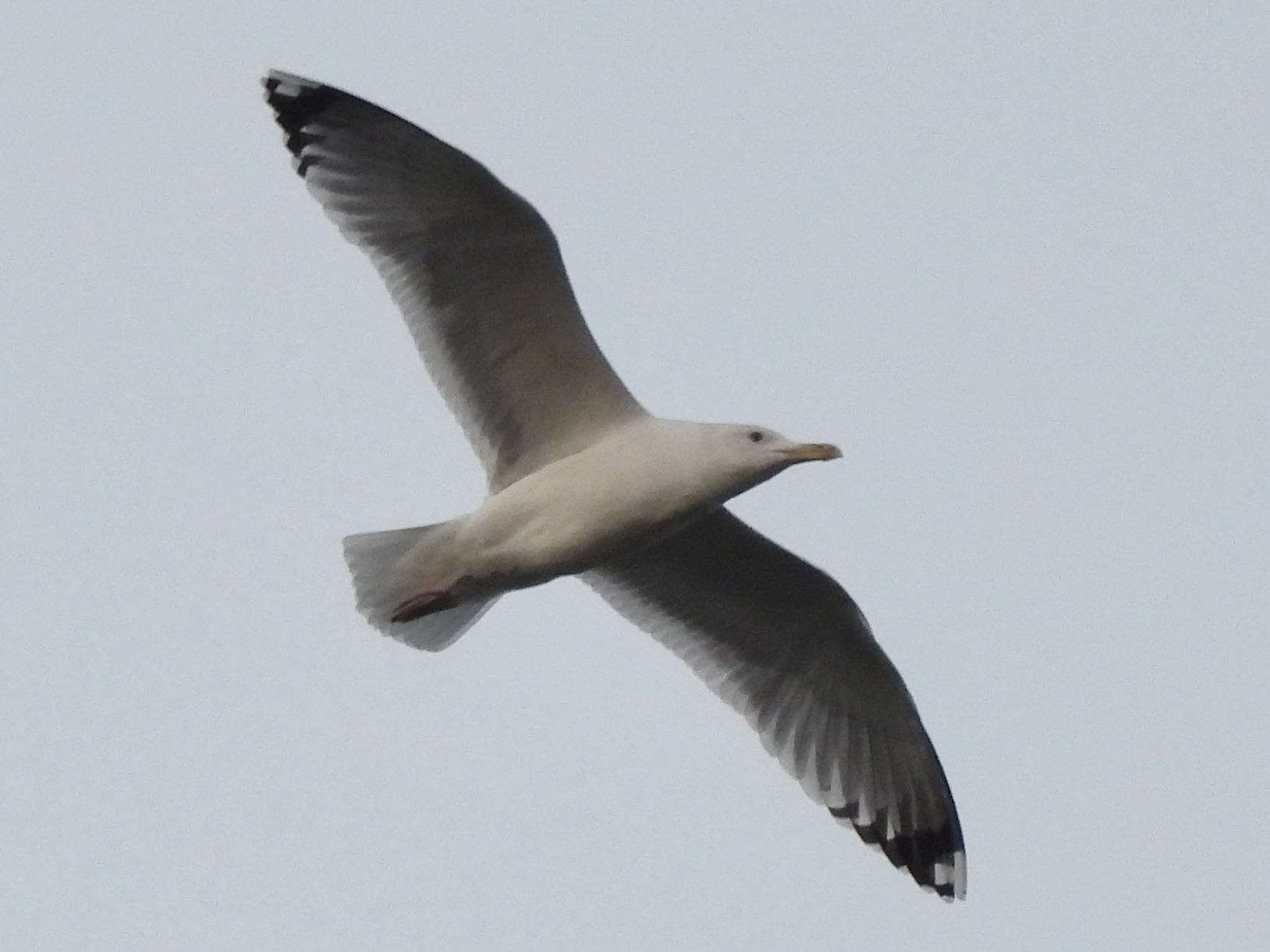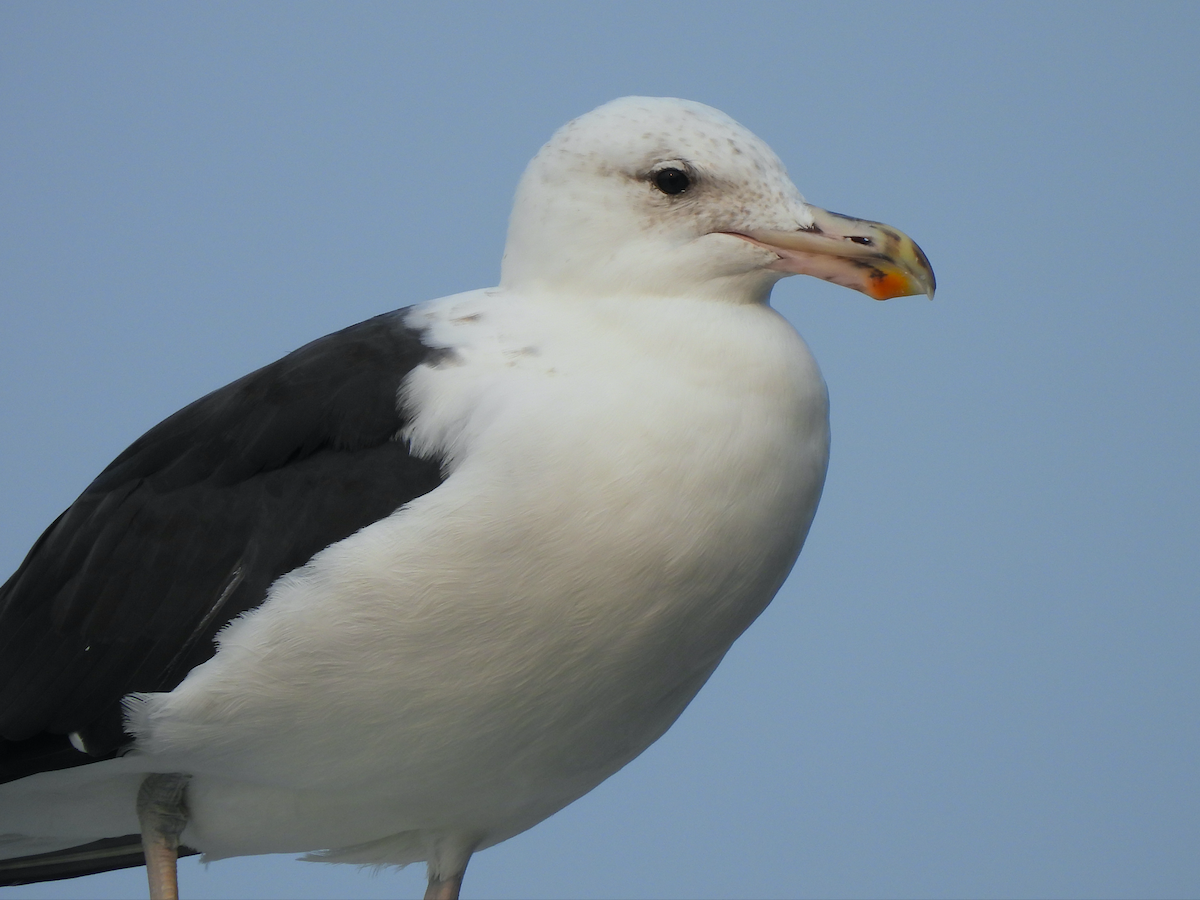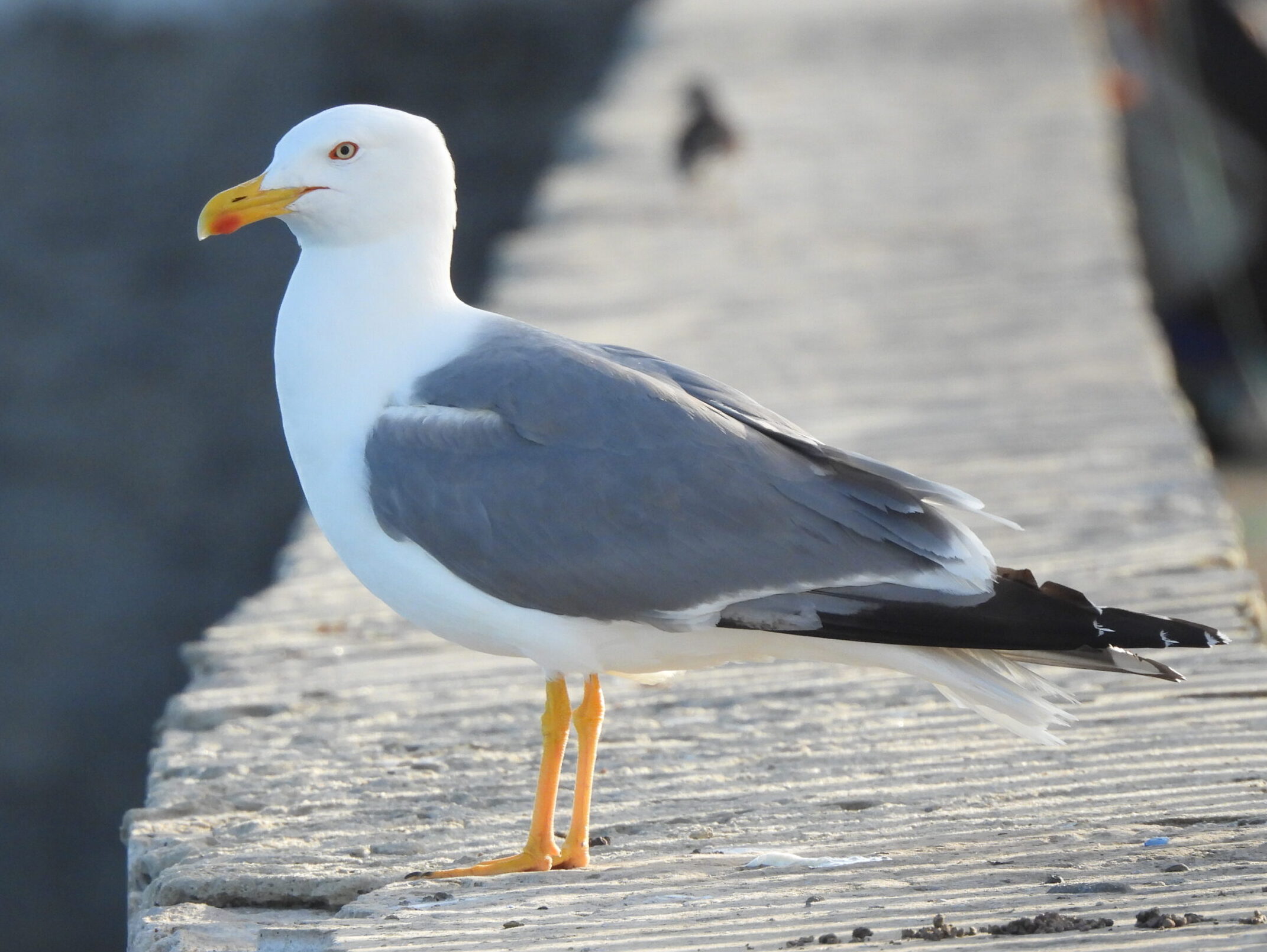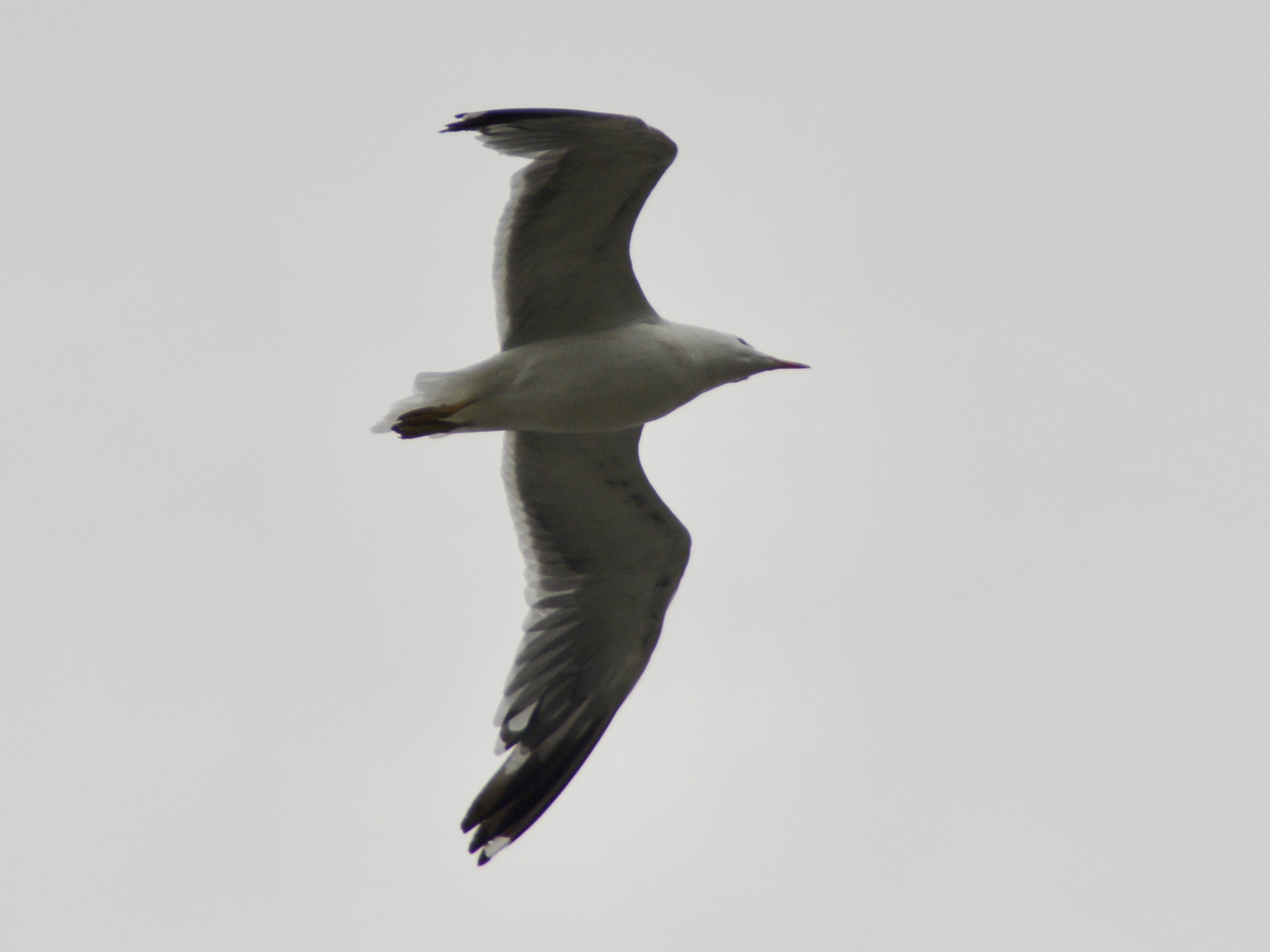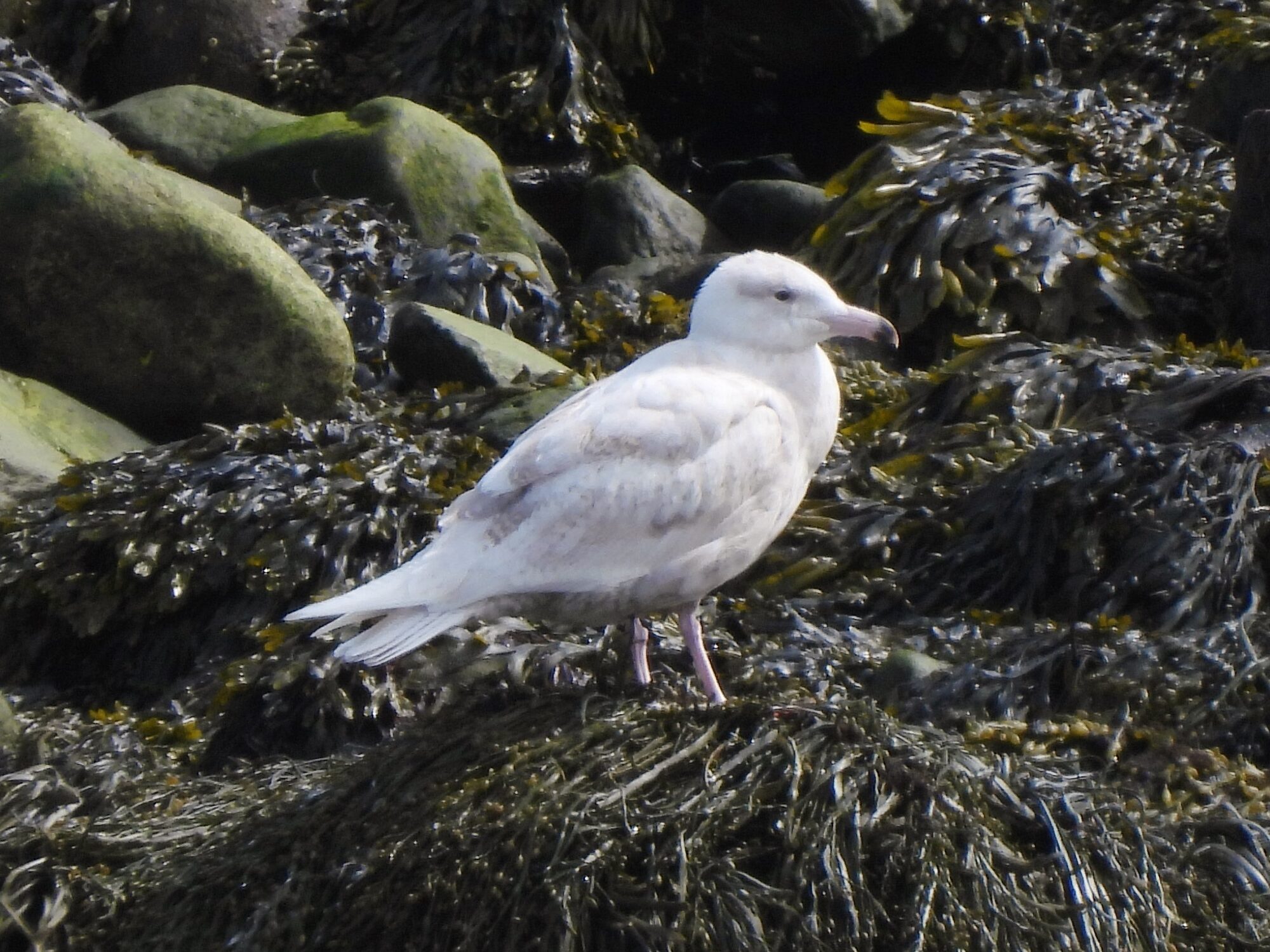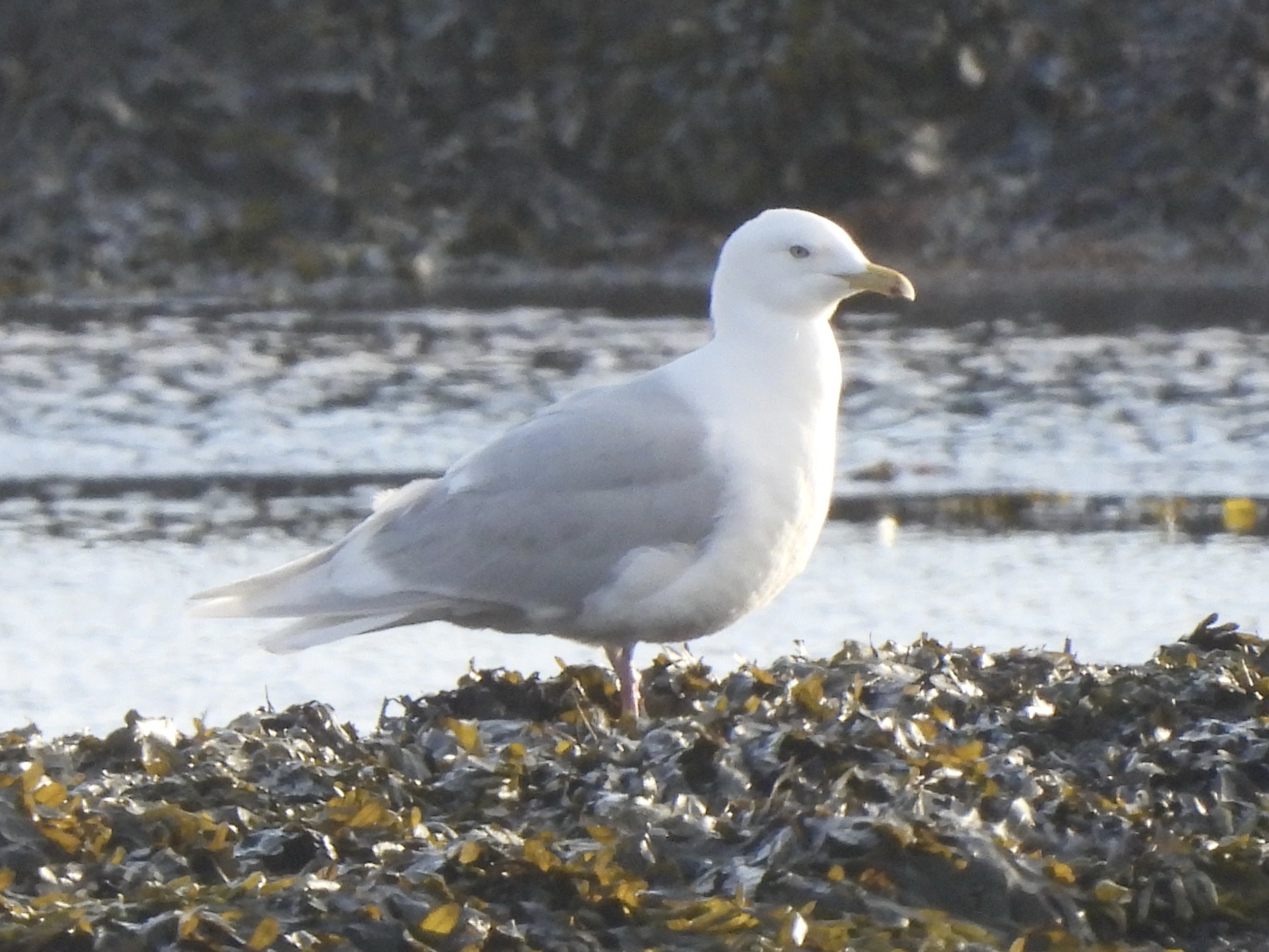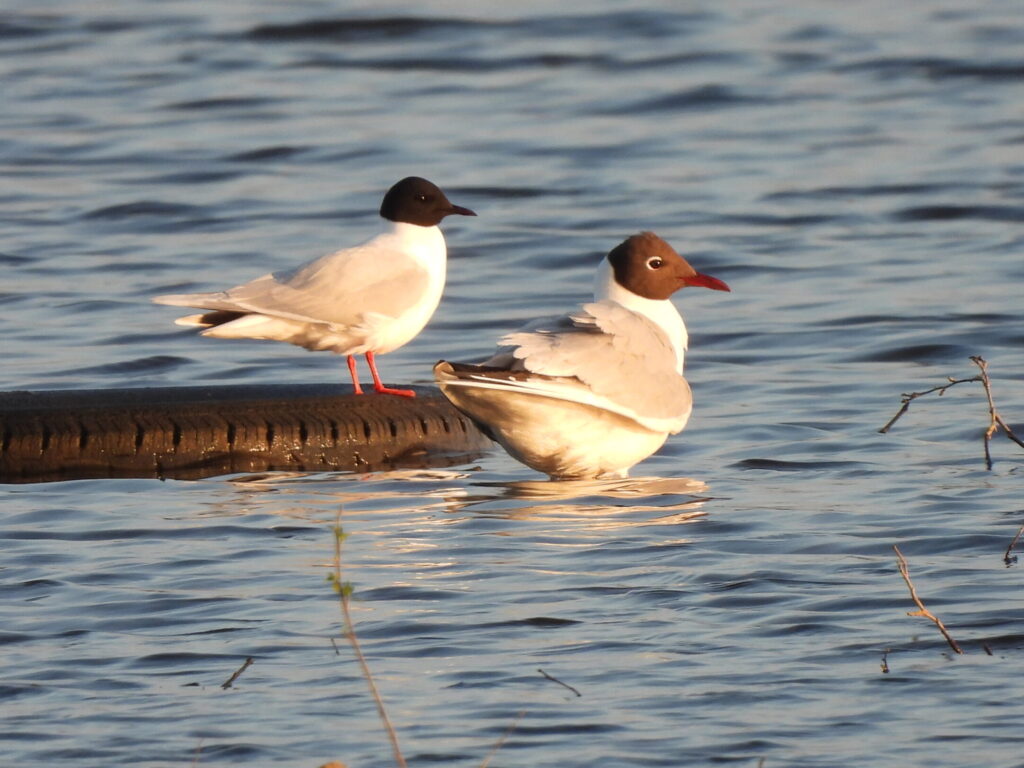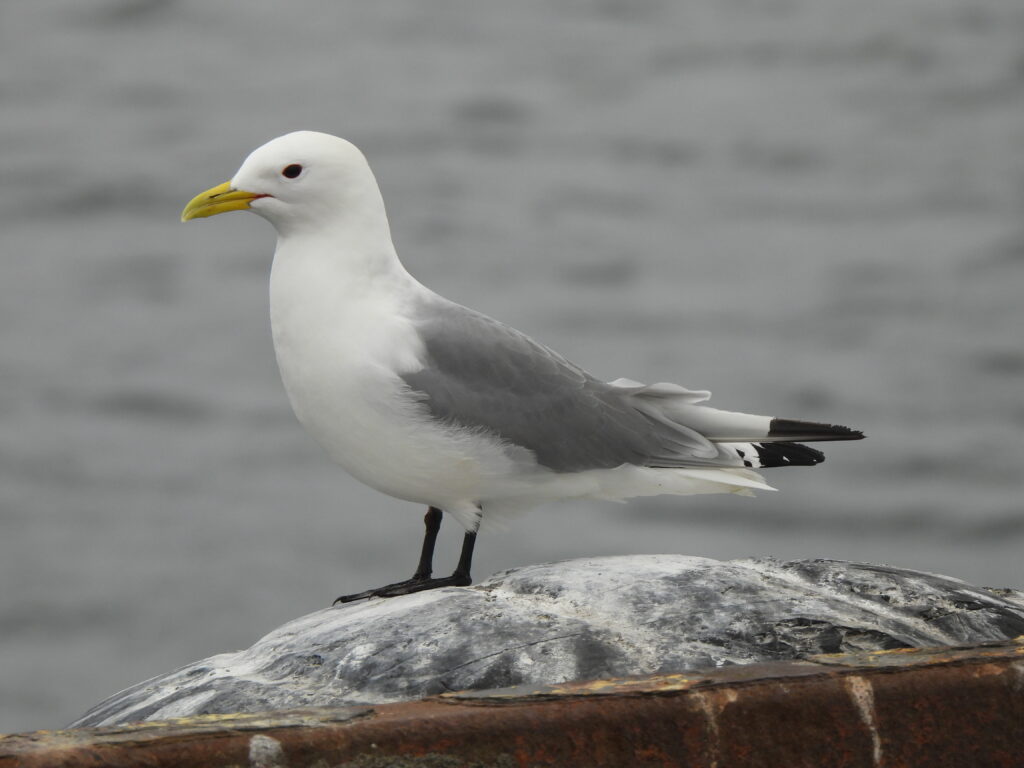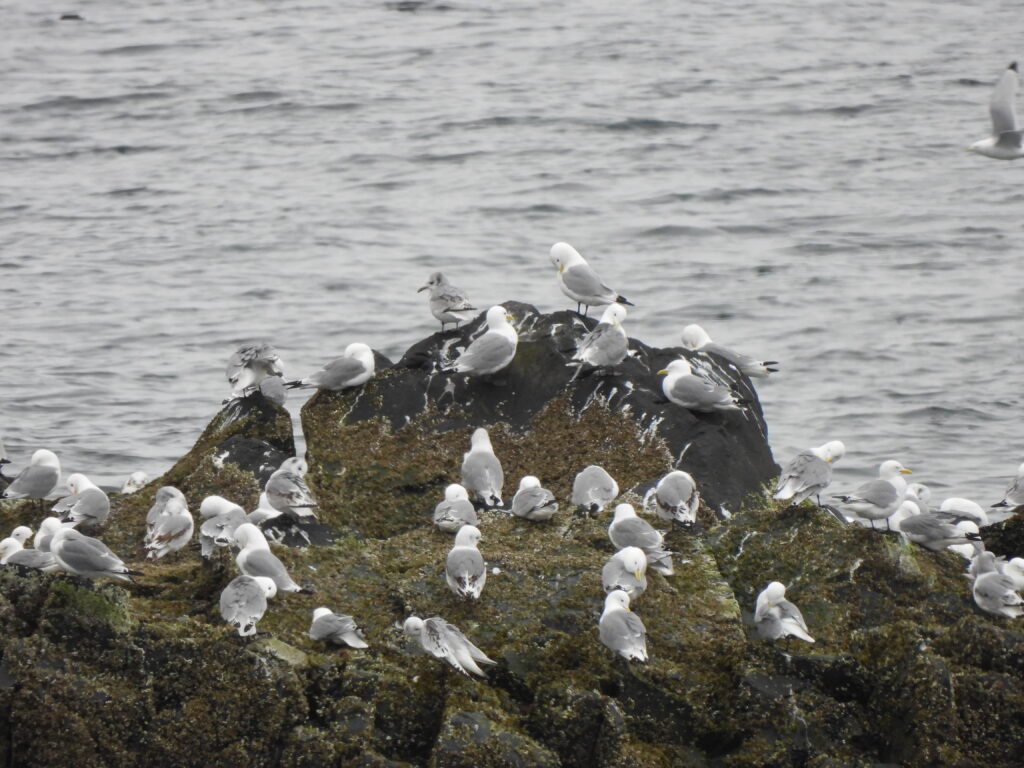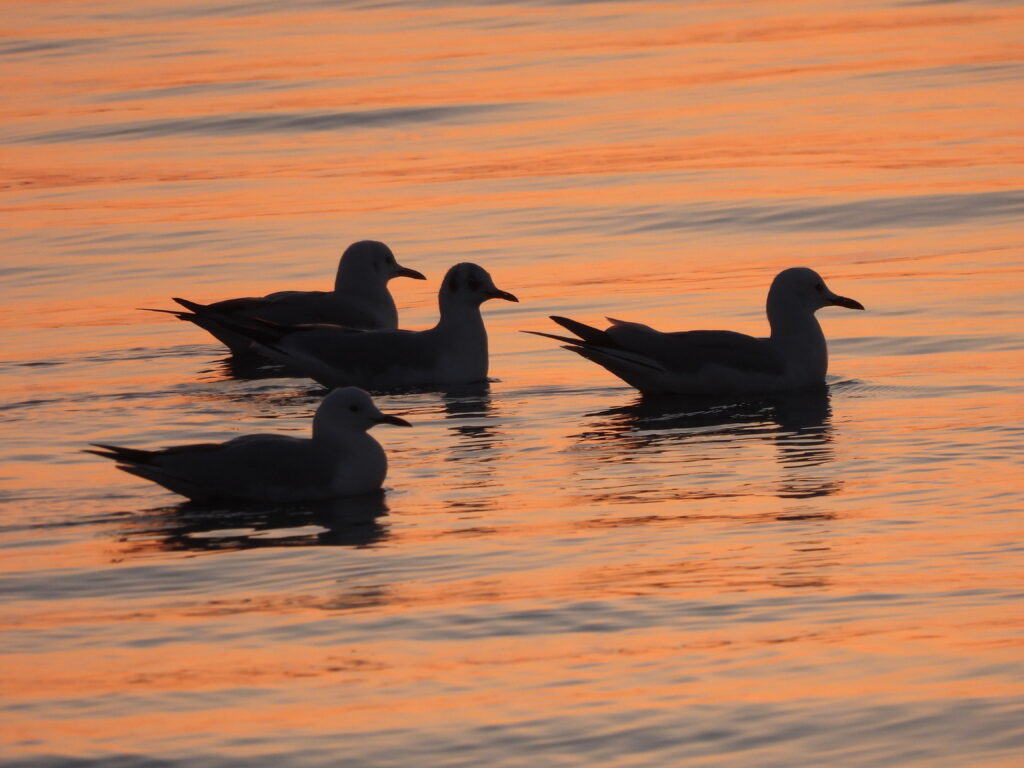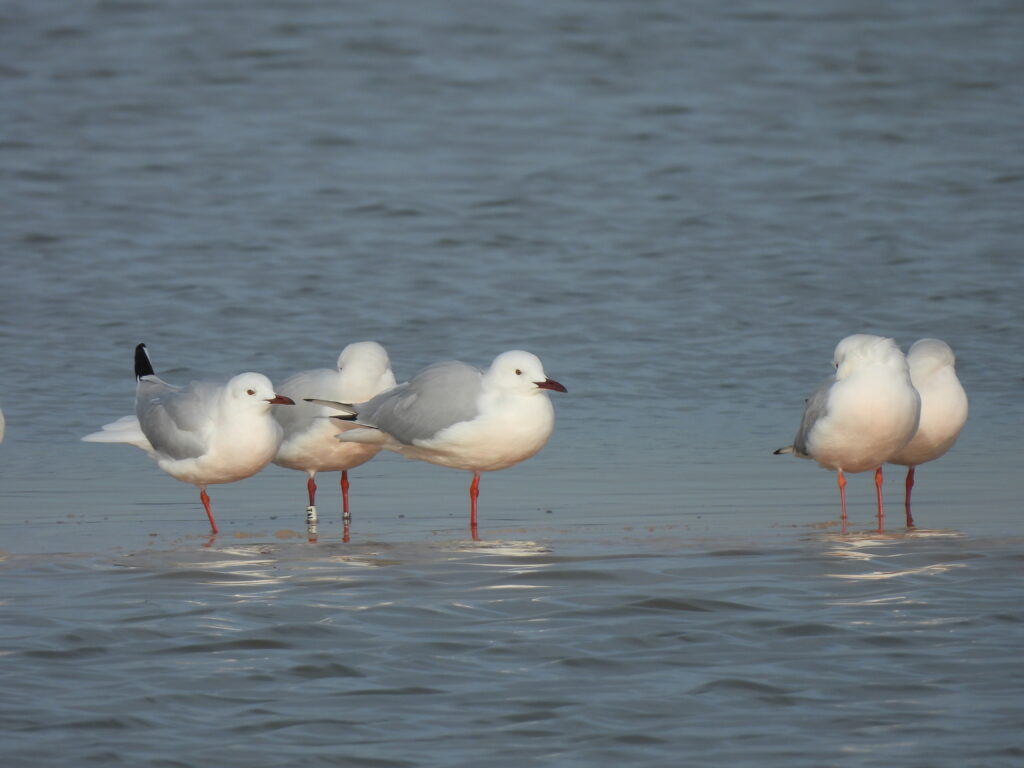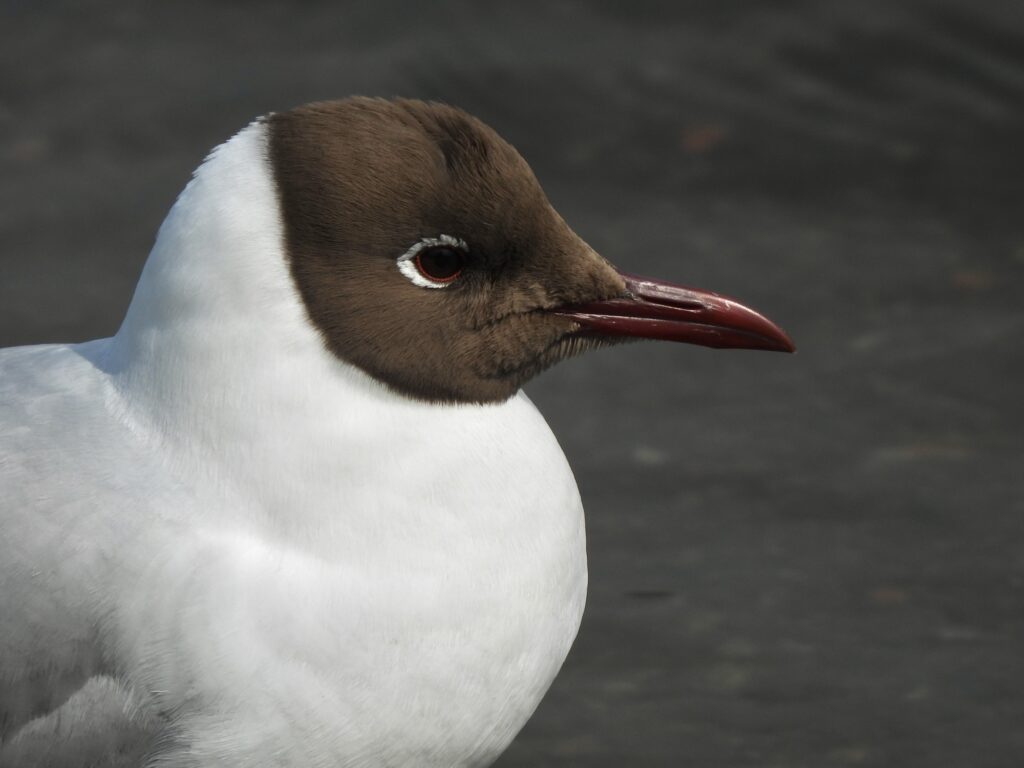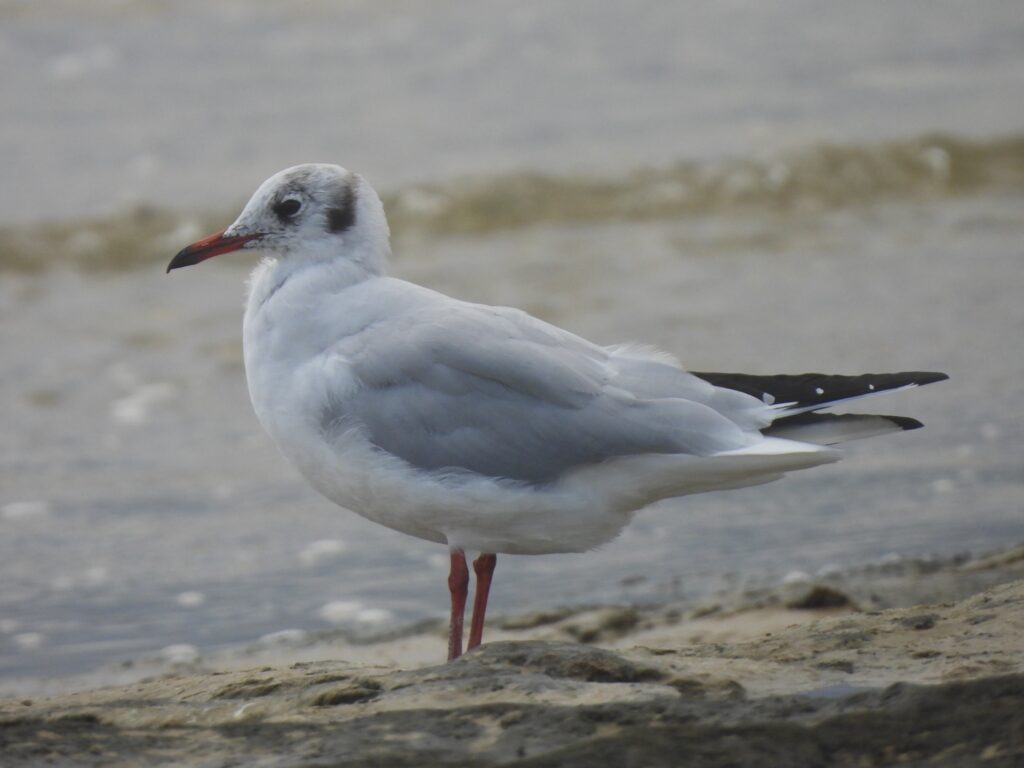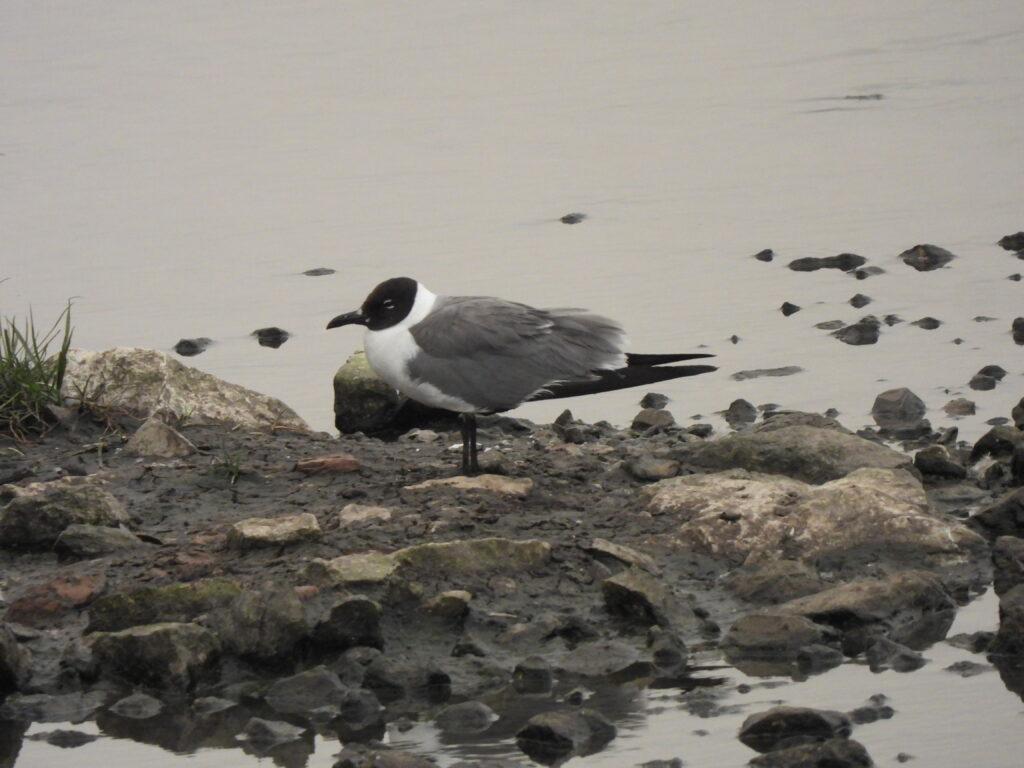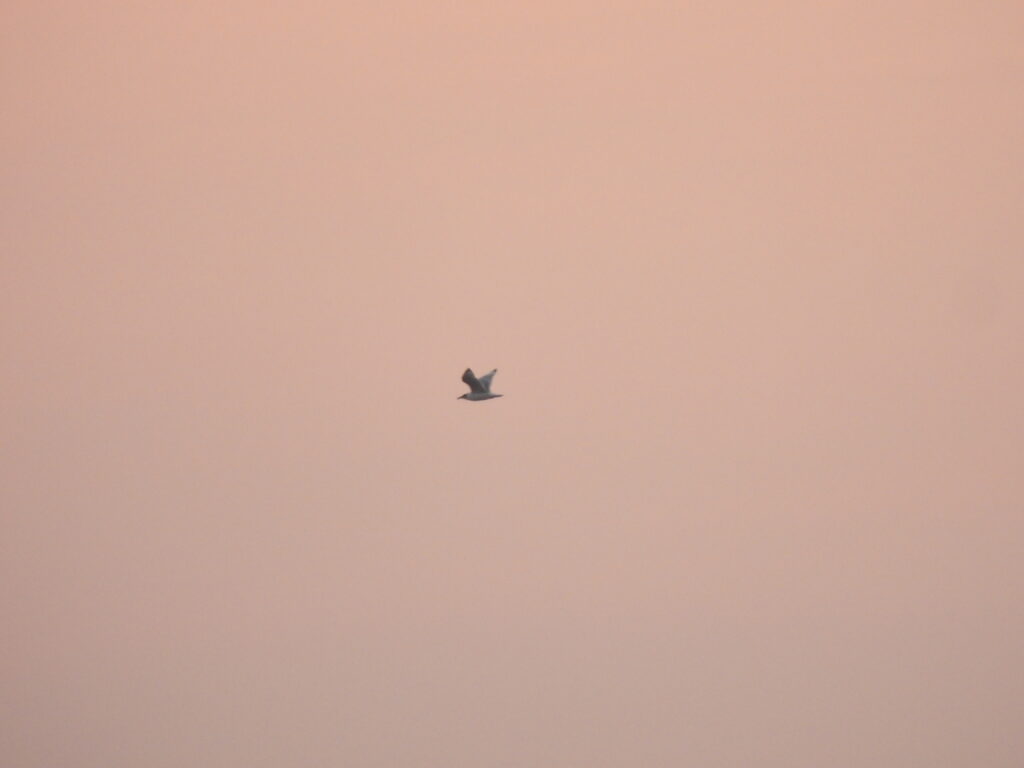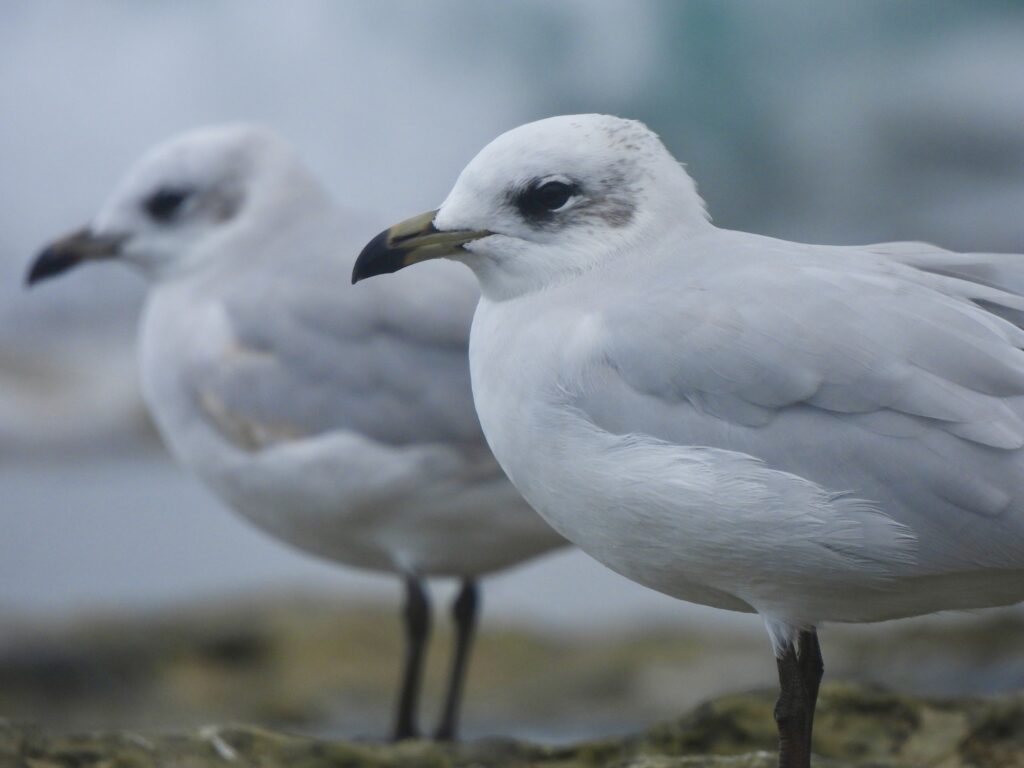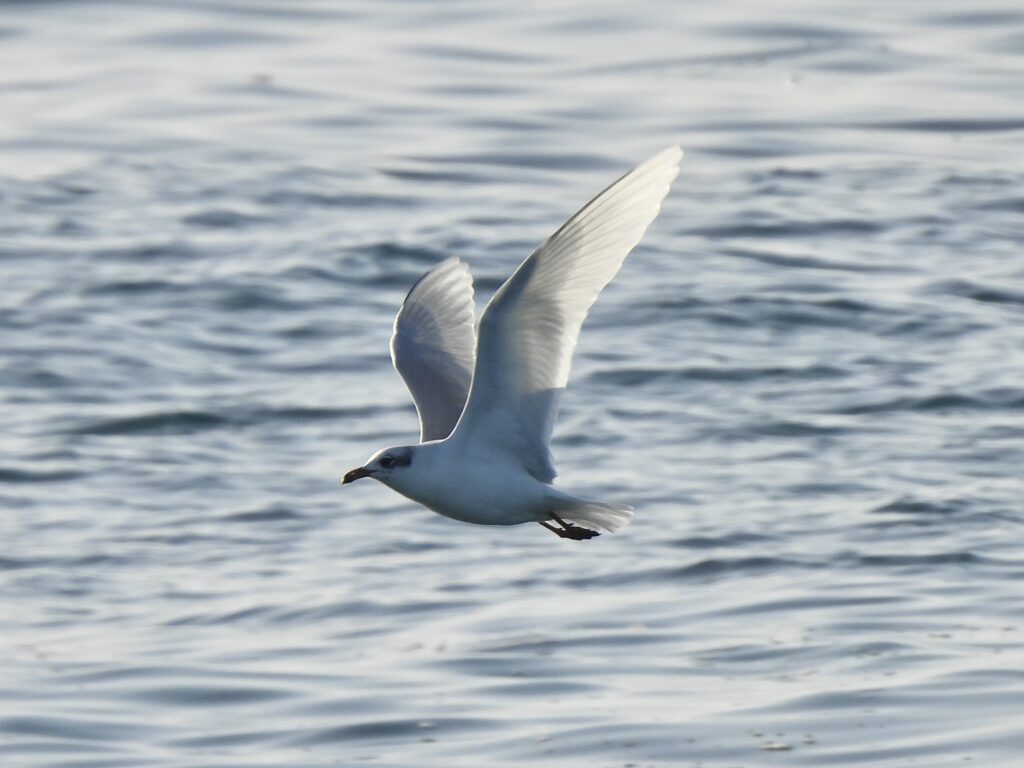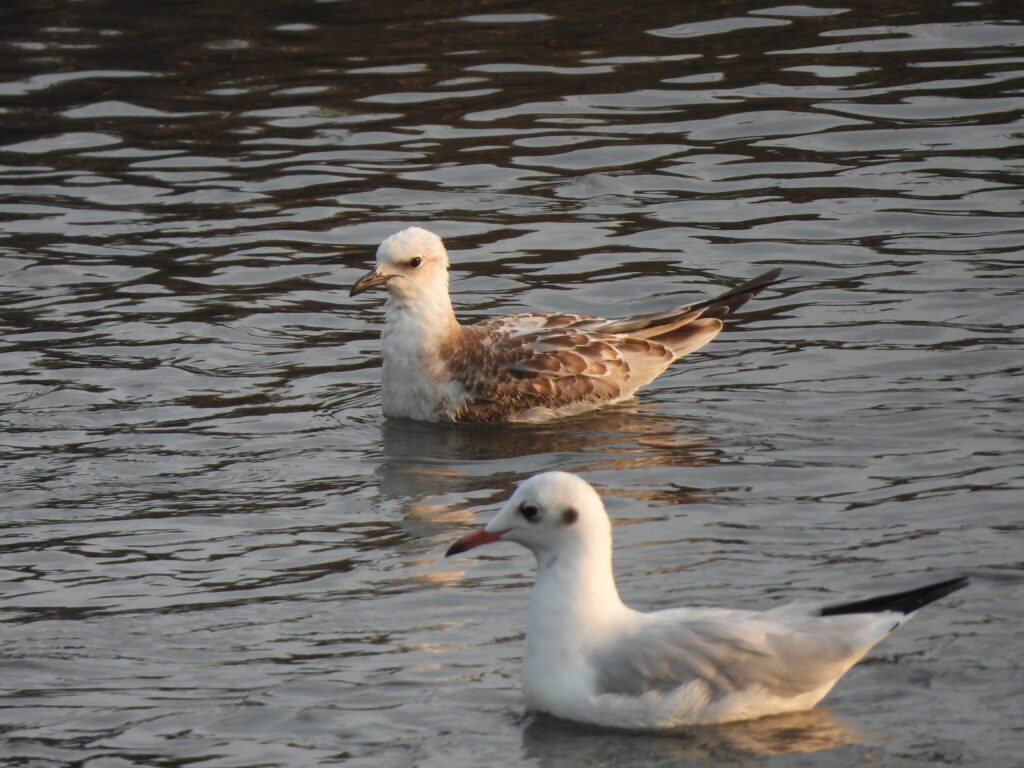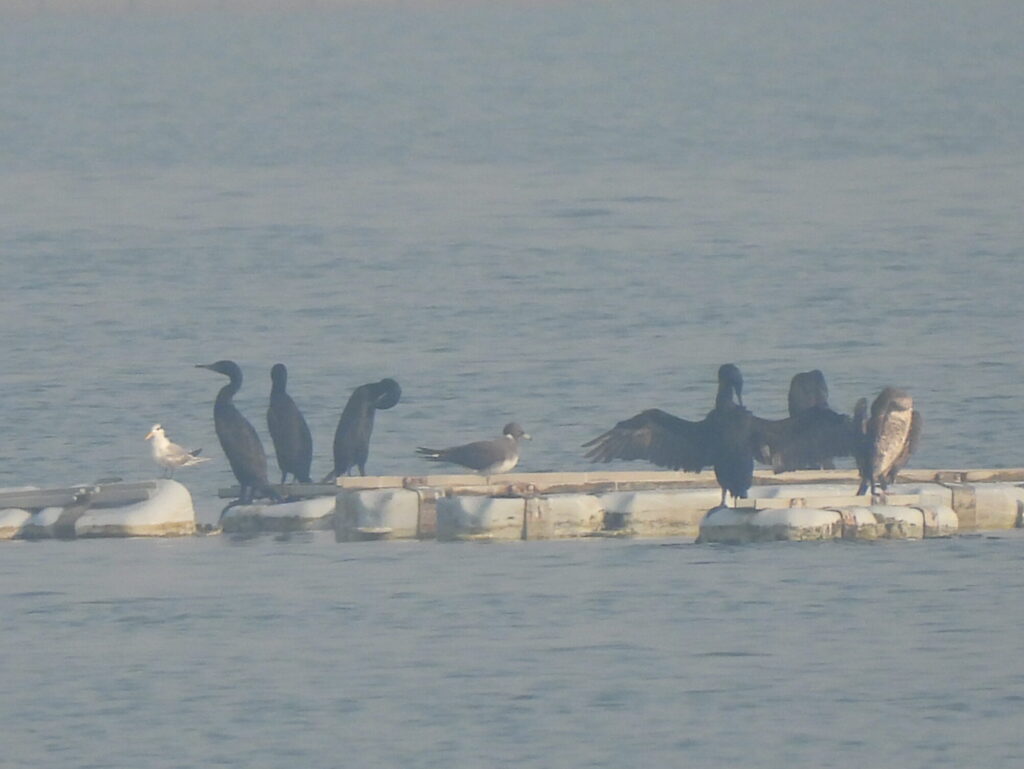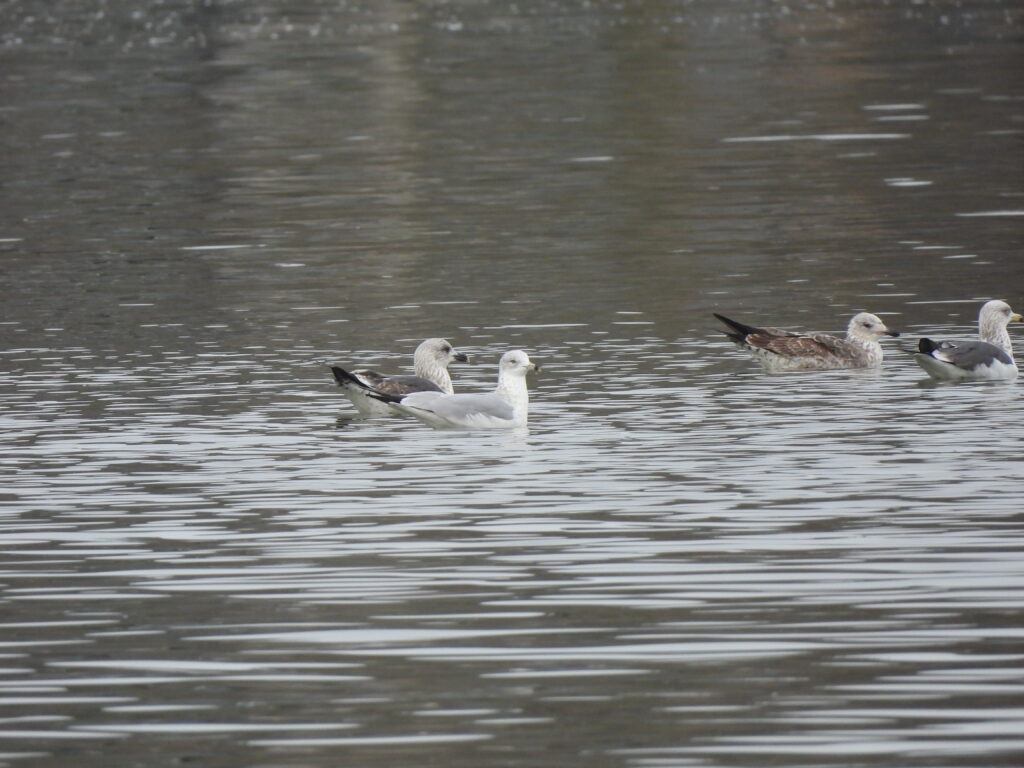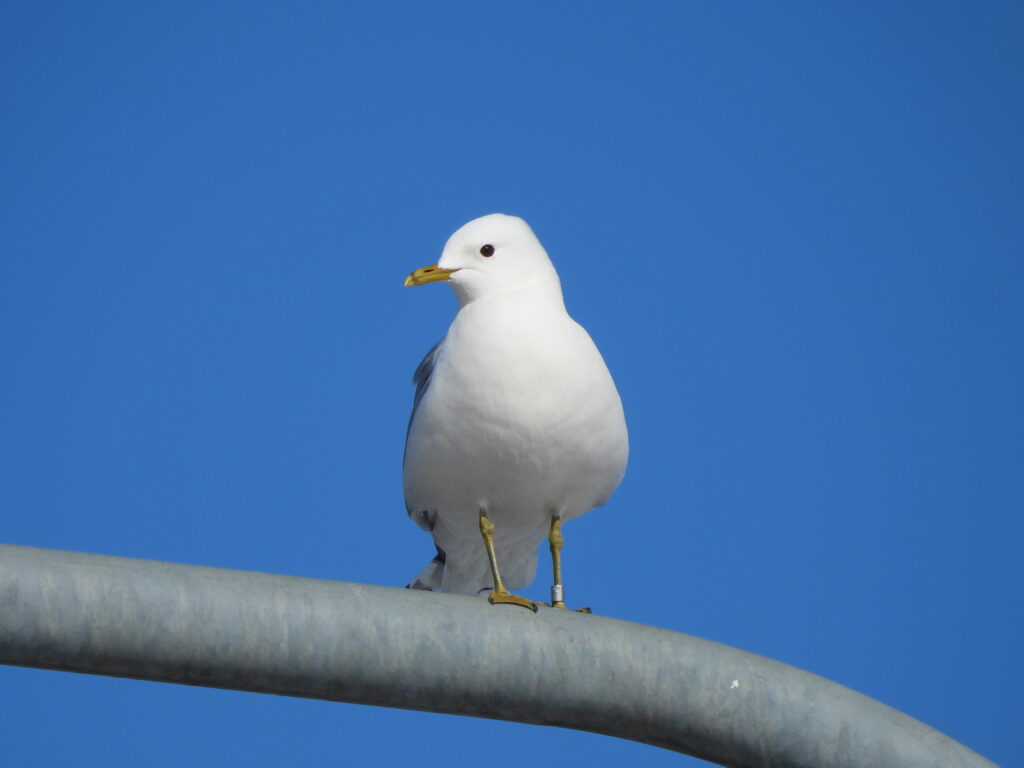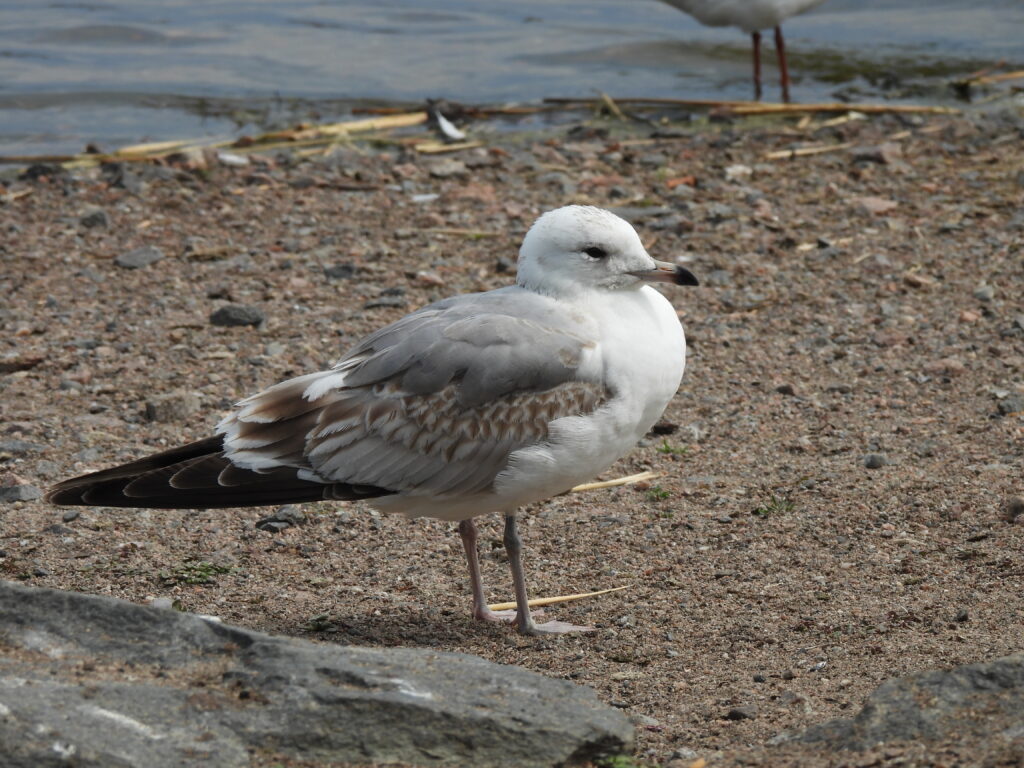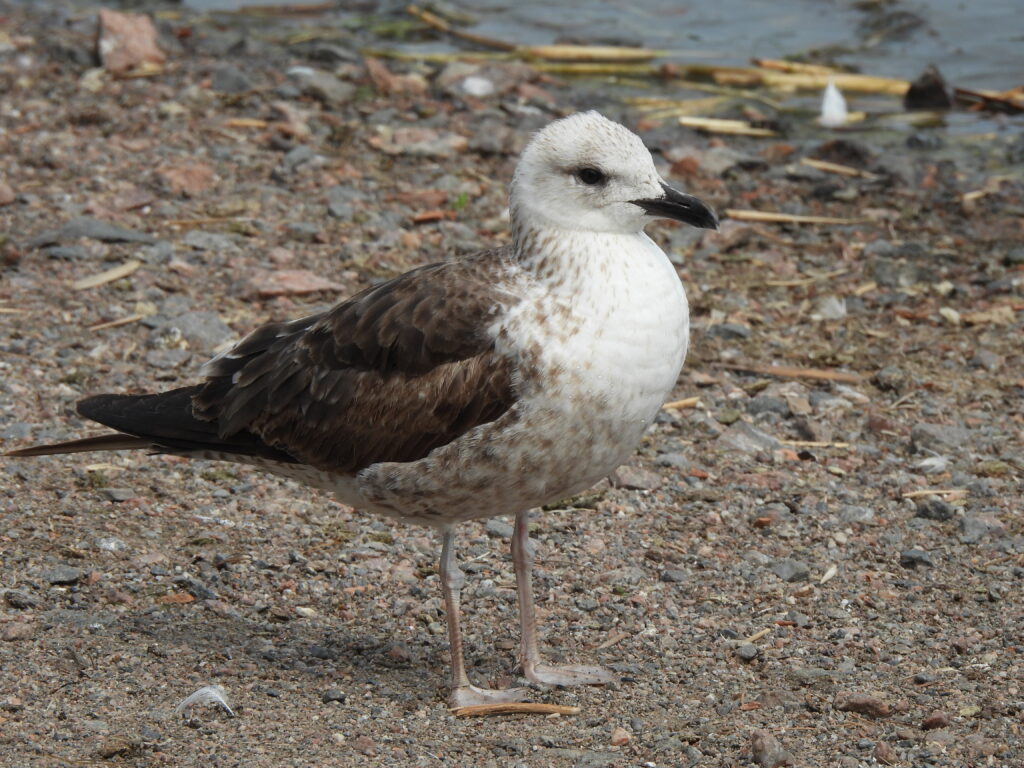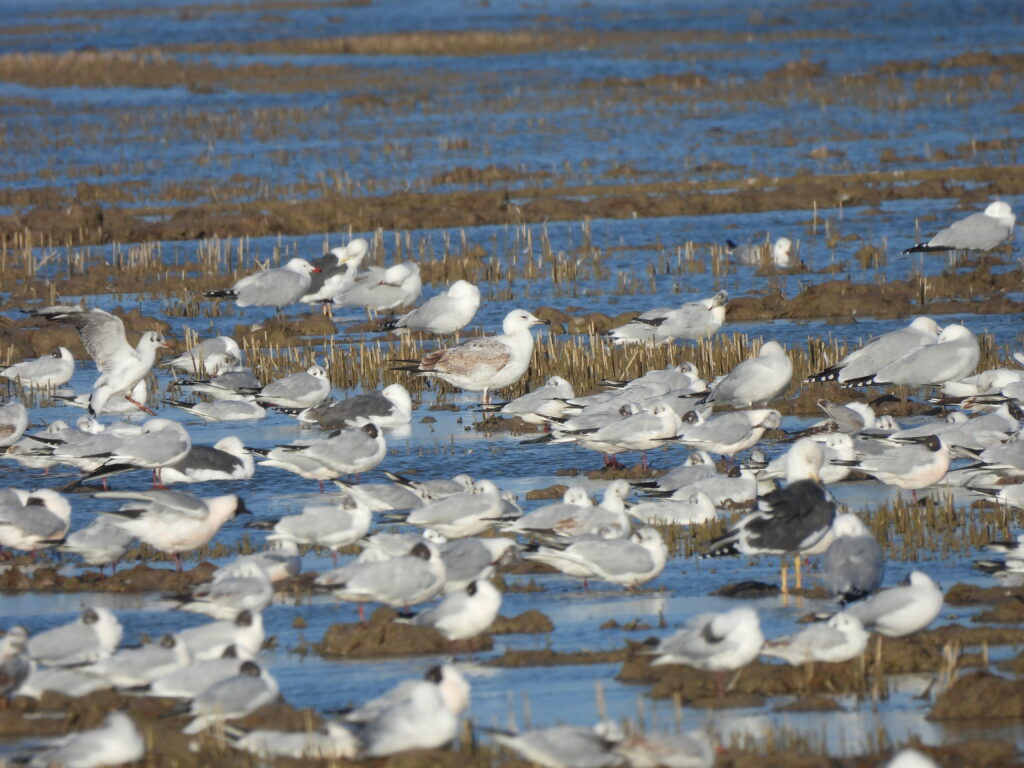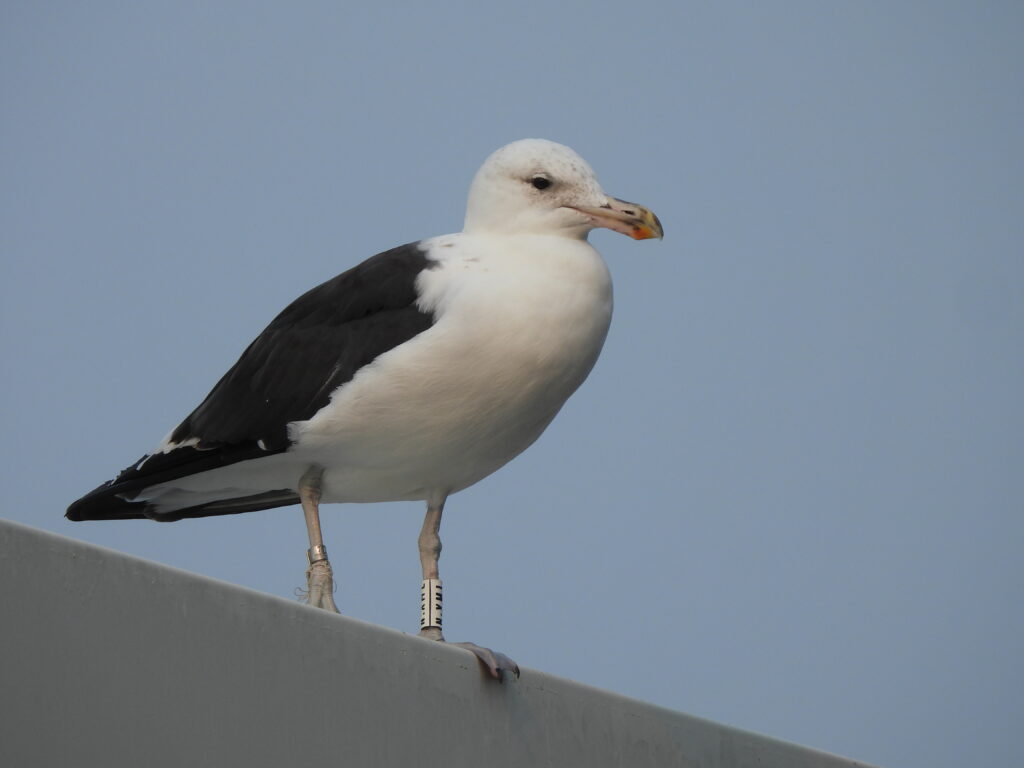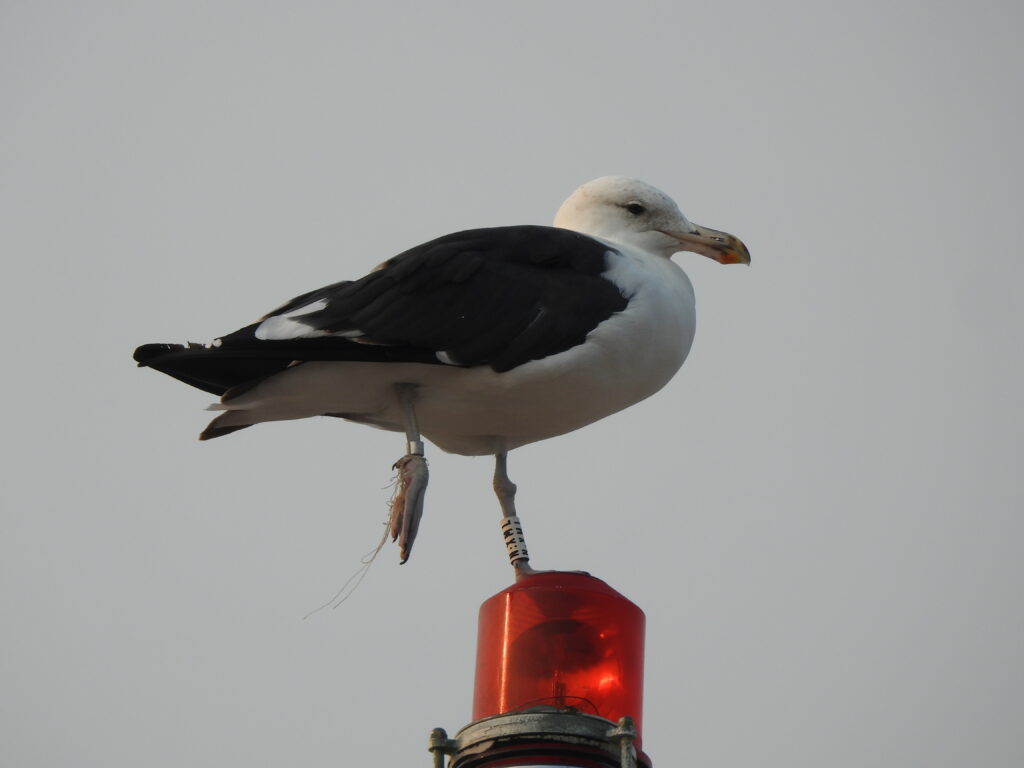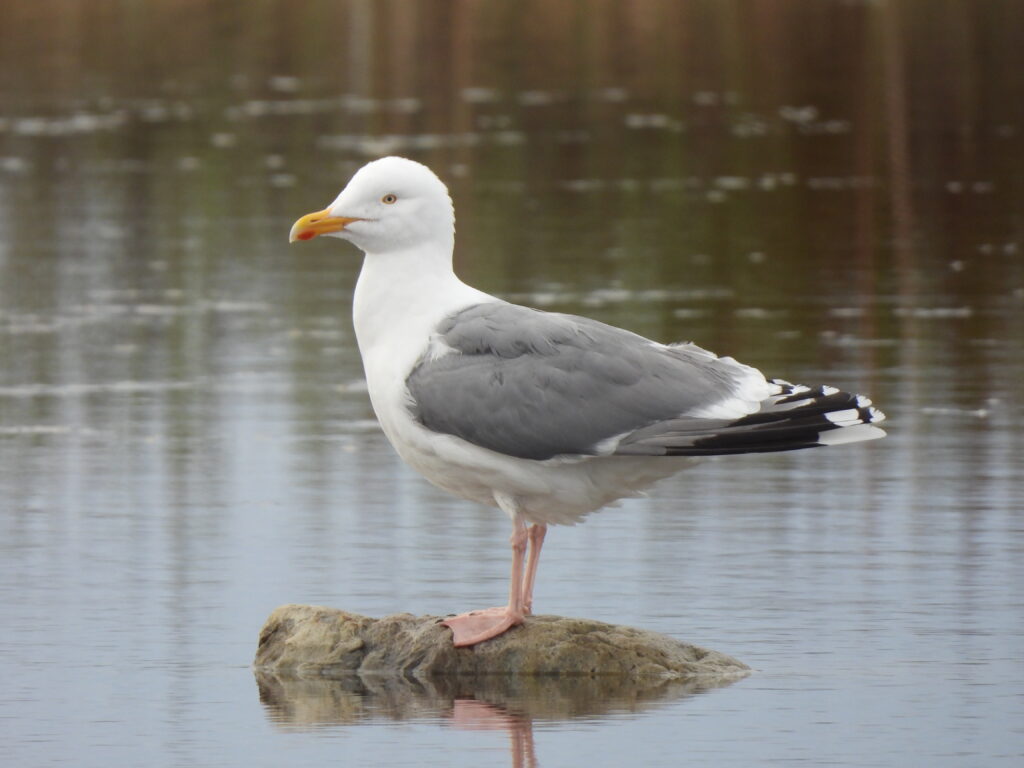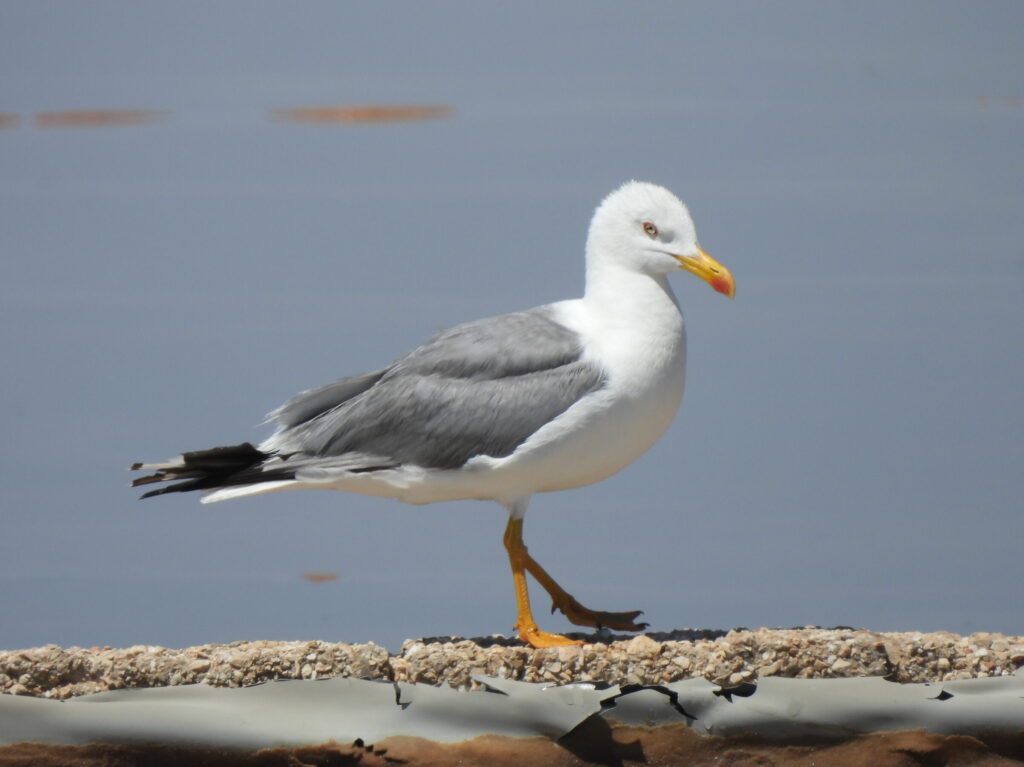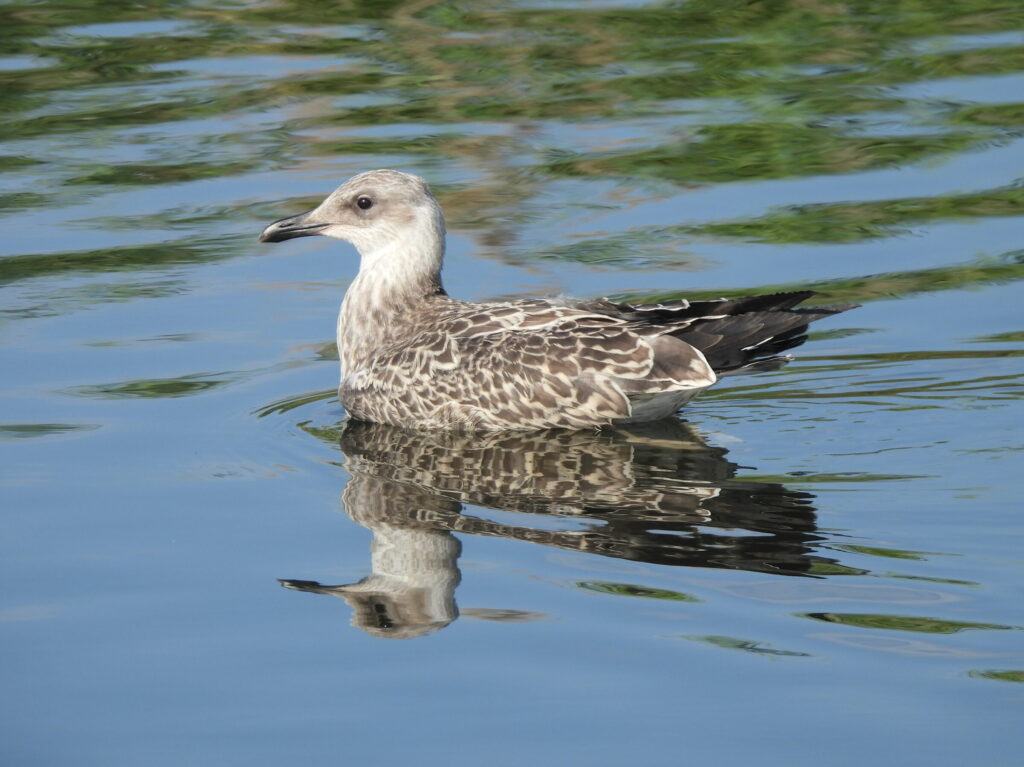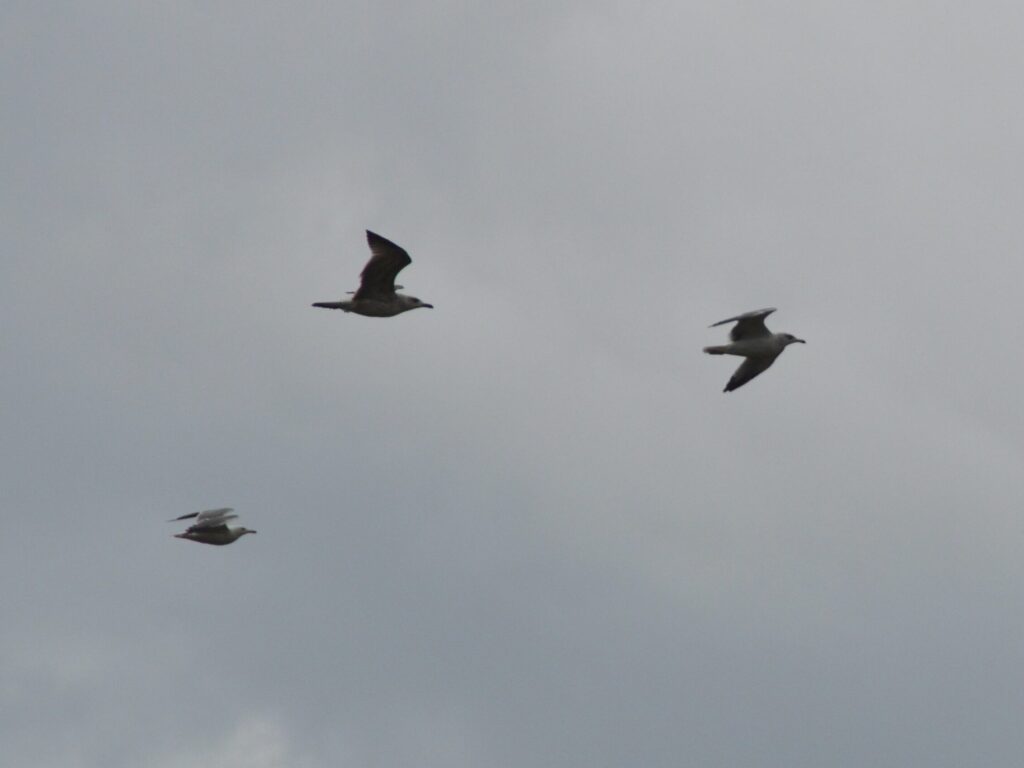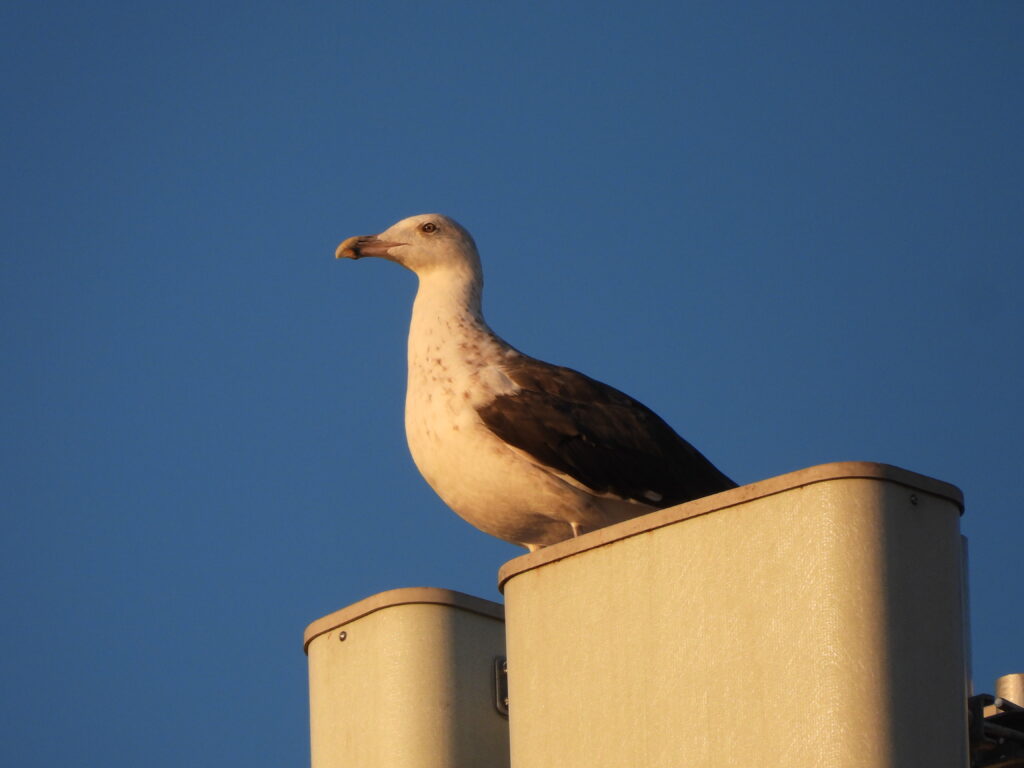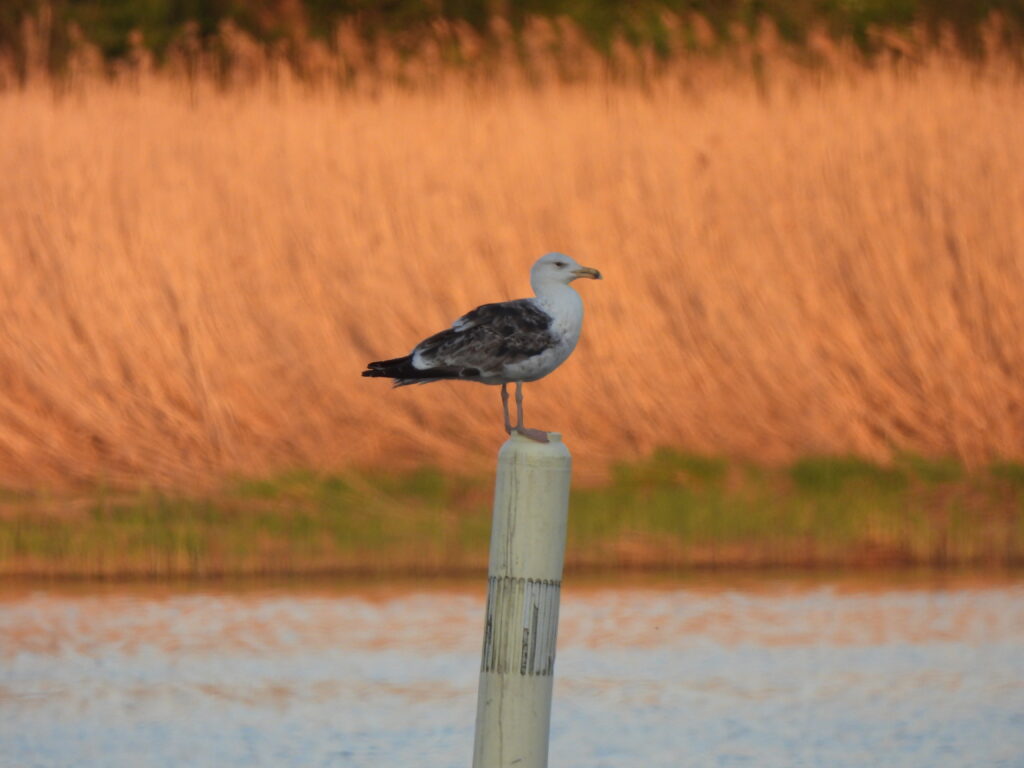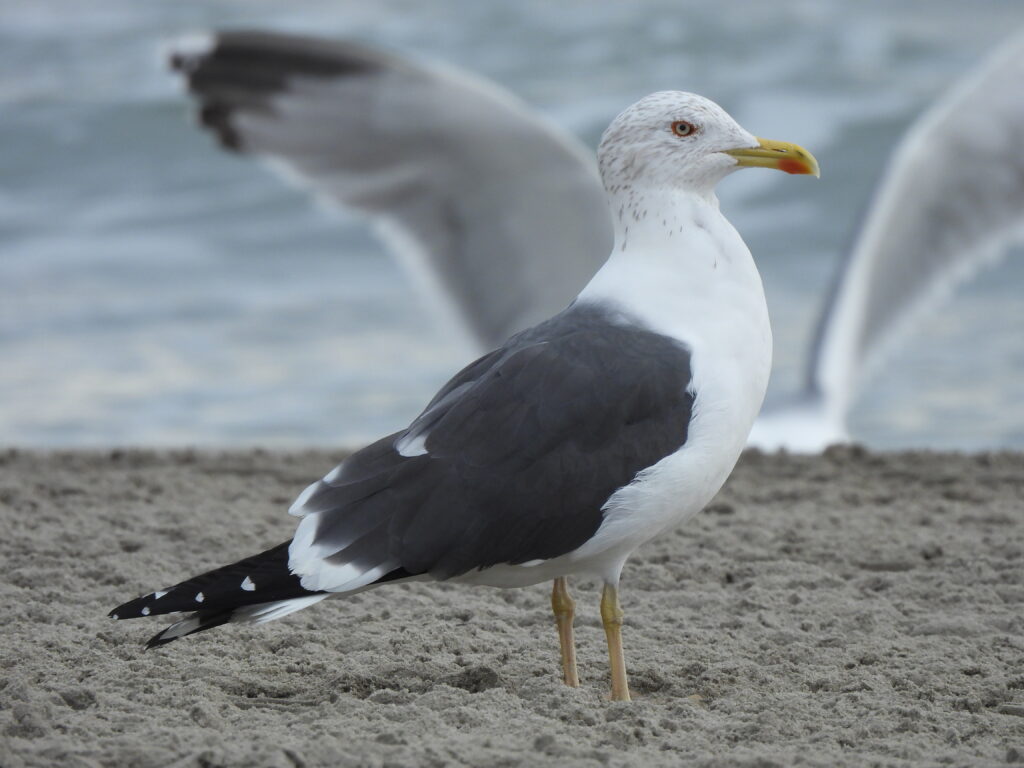The gulls, terns and skimmers (family Laridae) are a distinct family of birds belonging to the order Charadriiformes, often regarded as shorebirds. They have a cosmopolitan distribution among coastal areas of all continents including Antarctica, and different species are widespread in inland water bodies. They are perhaps the most aerial of shorebirds, with some species adapted to marine life on the wing in the pelagic zone, performing migration routes of over 20,000 km. While many species have benefitted from human development for trophic resources or breeding areas, several species occur in remote areas and low densities, with few threatened of extinction for different reasons.
The family comprises 105 species in 23 genera, traditionally classified in three groups. The skimmers (subfamily Rynchopinae) belong to genus Rynchops (3 species) found in tropical and subtropical America, Africa and southern Asia.
The terns (subfamily Sterninae) belong to different genera. Genera Gygis (3 species) and Anous (5 species) — most often known as noddies — are pelagic and mostly distributed along tropical ocean waters. Meanwhile, Onychoprion (4 species), Sternula (7 secies), Phaetusa (1 species), Hydroprogne (1 species), Gelochelidon (2 species), Larosterna (1 species), Chlidonias (4 species), Thalasseus (7 species) and Sterna (13 species) are well distributed in all oceans and seas, including polar regions.
The gulls (subfamily Larinae) are widespread in all continents except Antarctica. This group includes genera Creagrus (1 species) from the Galapagos; Hydrocoloeus (1 species), Rhodostethia (1 species), Rissa (2 species), Xema (1 species) and Pagophila (1 species) from the Arctic region; Saundersilarus (1 species) from eastern Asia; Leucophaeus (5 species) from the New World; Ichthyaetus (6 species) from the Old World; and cosmopolitan genera Chroicocephalus (10 species) and Larus (25 species). Interesingly, several taxa of this last genus are the classic example of ring species speciation — that is, birds differing along a gradient following a latitudinal range that eventually become parapatric and end up in populations unable to interbreed co-occurring at both ends of the ring.
Little gull
Hydrocoloeus minutus
Breeds locally in marshes mostly in northern Europe and Asia with some populations in North America and winters mainly at the sea in temperate regions. It is the world’s smallest gull species and features black underwing all year round and a jet black hood and bright red legs in breeding plumage. This species is regular during passage in Helsinki but I have seen it best at its breeding grounds in Lapland.
Black-legged kittiwake
Rissa tridactyla
Main component of many seabird colonies in inaccessible cliffs across the high latitudes of the Northern Hemisphere, often along auks, fulmars and gannets. Outside their breeding season, this small gull is strictly pelagic and forages in cold waters. Uniquely among gulls, their feet only have three toes, albeit Pacific populations have a vestigial forth toe. I have seen good numbers of this species in Lapland.
Slender-billed gull
Chroicocephalus genei
Breeds very locally in lagoons in the Mediterranean Sea and parts of Central Asia and western India, where it is generally uncommon. Most populations are migratory and reach northern Africa, the Arabian Peninsula and eastern India. Unlike relative species, their head pattern remains clean white all year round. This species has a breeding colony and overall a population with good numbers in the coast and wetlands of southern Alicante.
Black-headed gull
Chroicocephalus ridibundus
Extremely abundant in most aquatic habitats of its range in the Old World all year round — nonetheless it is the most numerous small gull in Europe. It is a migratory species occurring only over the summer in higher latitudes and migrating south to warmer coastal areas in winter. This species often forages in inhabited areas. Good numbers are present all year round in Alicante and over the summer period in Helsinki.
Gray-headed gull
Chroicocephalus cirrocephalus
Found in tropical and subtropical marshes, reedbeds and coastal areas of the Neotropical and Afrotropical realms, where it can be relatively numerous. The gray hood is in full swing only in the breeding plumage, as is typical of dark hoods of gulls with a nuptial plumage. I have seen this species in the lakes of Kenya.
Laughing gull
Leucophaeus atricilla
Medium-sized gull spread along coastal areas of North America’s west coast, the Gulf of California, the Caribbean Sea and the Great Lakes, with individuals migrating in winter south to Peru and Brazil. They mostly forage in beaches, where they feed on fish and crustaceans and often scavenge — including food scraps. It is named after its raucous call. Vagrant individuals occasionally reach western Europe, and I have observed an individual in Spain in a wetland of Cantabria.
Pallas’s gull
Ichthyaetus ichthyaetus
Massive gull of marshes in the steppes of Central Asia and far Eastern Europe, migrating mainly to the Red Sea, Persian Gulf and northern Indian Ocean in winter, mostly found in saline and brackish wetlands rather than out at sea. Breeding adults are black-headed and the basic plumage retains part of the hood as dark tinges, while juveniles feature a white rump, unique among large-sized gulls. I have observed this species in Qatar.
Audouin’s gull
Ichthyaetus audouinii
Endemic to the Mediterranean and coastal northwestern Africa. Elegant and bright, adults show a tricolored bill with red, black and orange. This rather marine species used to be in a very compromised conservation status at the end of the 20th Century but has recently started nesting in colonies within urban settlements in commercial ports, often foraging within the cities or in nearby croplands. This species is particularly abundant all year round in Alicante.
Mediterranean gull
Ichthyaetus melanocephalus
Breeds very locally in colonies of inland marshes and freshwater wetlands scattered across Europe and wanders to coastal habitats in the Mediterranean south to Senegal. Adults show distinctive white primaries and the smart breeding plumage features a jet black head with white orbital spots and bright red bill and legs. This species is found all year round in different habitats in Alicante.
Sooty gull
Ichthyaetus hemprichii
Coastal medium-sized gull endemic to the Arabian Peninsula and surroundings, with colonies in islands and coral reefs of the Red Sea and Persian Gulf and wintering areas in the Arabian Sea south to Zanzibar. Its plumage is dark in all life stages, unlike other members of its genus and other gulls in its breeding range. I have seen this species near Dubai.
Ring-billed gull
Larus delawarensis
The most abundant and widespread gull in North America, covering coastal and inland habitats including large water bodies, rivers and flooded land, but also urban settlements. Only adults of this medium-sized gull show a clear black ring on the yellow bill, whereas juveniles’ bill is pink with a black tip. It is the most regular and less rare among all North American gulls vagrant in the Western Palearctic, often with returning birds. Indeed, I have seen a wintering individual in Madrid.
Common gull
Larus canus
Abundant in northern Eurasia in wetlands, grasslands and beaches during the breeding season, migrating south usually close to the coast during winter. This medium-sized gull has a distinctive dark eye surrounded by red skin in the breeding period, while the basic plumage features light streaking on an otherwise white head. This species is abundant over the breeding season in Helsinki but an occasional winter visitor in wetlands of Alicante.
Caspian gull
Larus cachinnans
Typical of large rivers and other inland water bodies in Eastern Europe and Central Asia, with birds wandering to Central Europe and the coast of the Arabian Peninsula in winter. Part of the herring gull complex, and co-occuring with other species of the group. I have seen this species in its wintering grounds in Greece, as well as vagrant individuals in winter in Alicante.
Kelp gull
Larus dominicanus
Large, black-backed gull of the Southern Hemisphere in coastal South America, southern Africa, New Zealand, south Australia and the Antarctic Peninsula. It often forages on fur seals, elephant seal and penguin colonies, where it scavenges. A very small population has recently colonized several areas of northeastern Africa, even within the Western Palearctic. Therefore, it is extremely rare but perhaps increasingly recurrent in Europe, where I have seen it in Cantabria (N Spain).
European herring gull
Larus argentatus
Large gull with dull pink legs widespread in coastal areas of Northern Europe, often venturing inland to croplands and towns and out at sea for food. The species reaches south to the coast of north Portugal in winter and is generally scarce to rare in Southern Europe. It once included numerous populations that are now treated separate species. It is a common resident in Helsinki.
Yellow-legged gull
Larus michahellis
Large gull which is extremely abundant in the Mediterranean, foraging in beaches, wetlands and urban settlements. Its range includes northeastern Africa and part of the population migrates around Europe. Adults are bulky and large with yellow legs, a unique combination in the herring gull complex. The ‘Atlantic‘ atlantis form is an endemic resident to the Canary Islands, Madeira and the Azores, where I have seen it. The nominate form is the most abundant gull in coastal Alicante.
Armenian gull
Larus armenicus
Very localized breeder of mountain lakes in the Caucasus region and surroundings, partially migrating to nearby coastal areas in the Middle East. Rather small and nice-looking among the herring gull complex, with singular round head, dark eye and reduced black wingtips. I have seen this species in Georgia.
Great black-backed gull
Larus marinus
The largest gull species, distributed in coastal areas of the North Atlantic, breeding from Greenland and Svalbard south to North Carolina and far northern Spain, but shifts slightly more south in winter generally along the coast. This species is resident in Helsinki, but I have also seen it in its breeding colony in Lapland and in wintering grounds at the coast in Galicia and Cantabria (N Spain).
Glaucous gull
Larus hyperboreus
Massive gull widespread in the Arctic, with breeding populations across the Canadian and Alaskan Arctic, Greenland, Iceland, Svalbard and Siberia. They migrate to coastal areas of northern latitudes in winter. It is very light in color, featuring white primaries, and is generally recognized as the second largest gull. I have observed this species in Lapland.
Lesser black-backed gull
Larus fuscus
Widespread in coastal areas of the Palearctic, with expanding populations across the Holarctic. Large gull, but not as large as the herring gull complex. The wing plumage has a clinal variation from near-black gray in the ‘Baltic‘ nominate form to lighter tones on the ‘Heuglin’s‘ heuglini and especially ‘Steppe‘ barabensis of Central Asia. The nominate Baltic gull is a local summer visitor in Helsinki whereas good numbers of the Central European forms winter in certain areas of the coast of Alicante.
Iceland gull
Larus glaucoides
Light-colored medium-sized gull of the Arctic with primaries which are white in the eastern nominate race of Greenland but show a clinal variation to darker in the ‘Thayer’s‘ thayeri form of the western Canadian Arctic. They winter at coastal areas of high latitudes, with few numbers venturing to more temperate areas. I have seen this species in Lapland.

